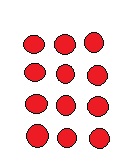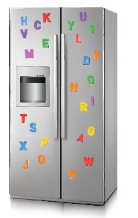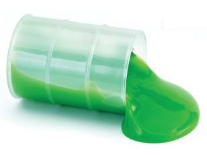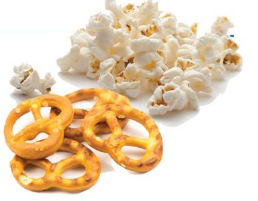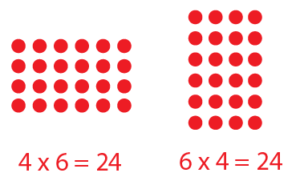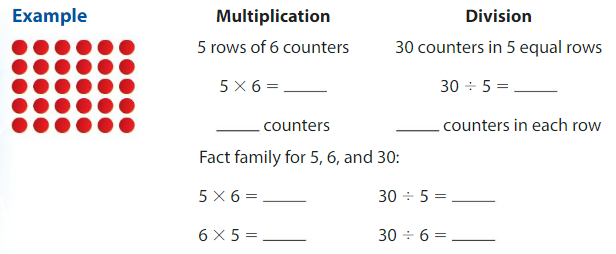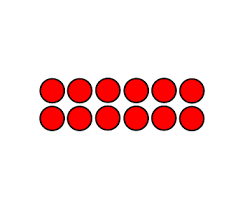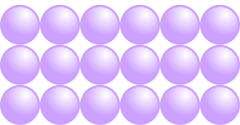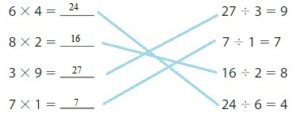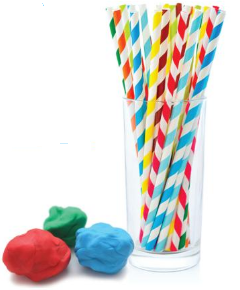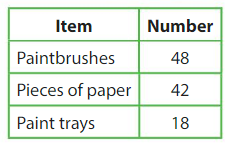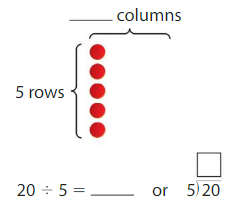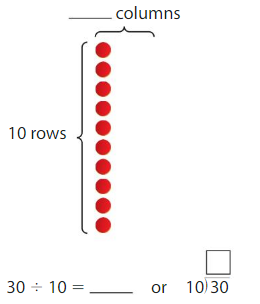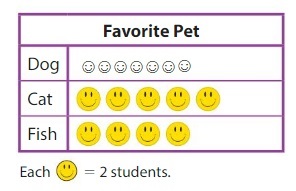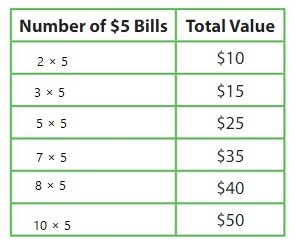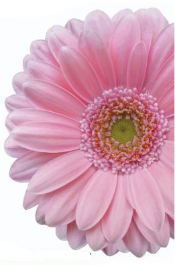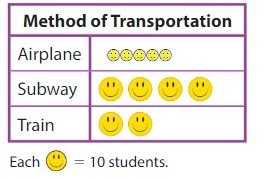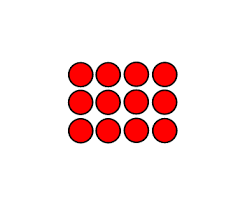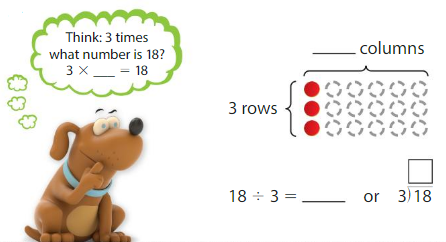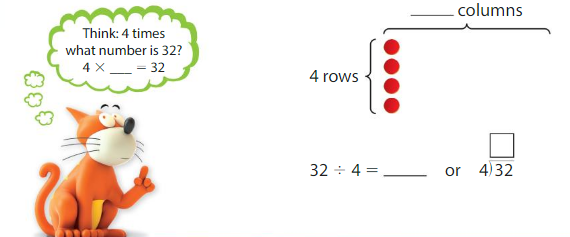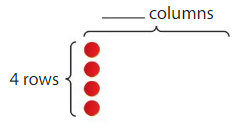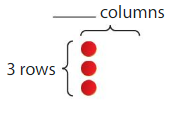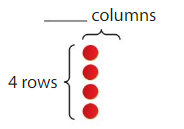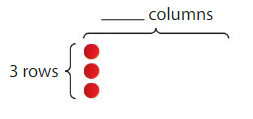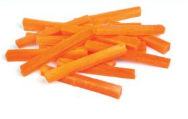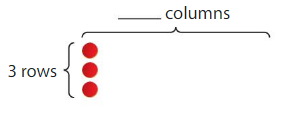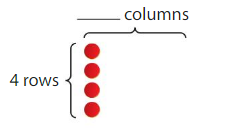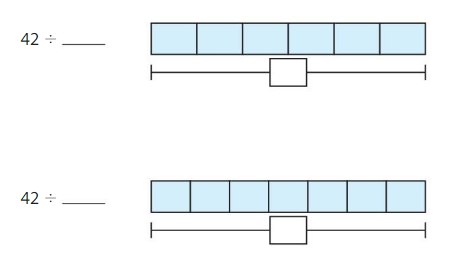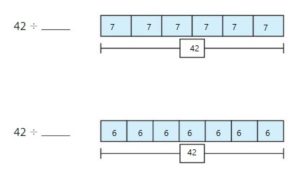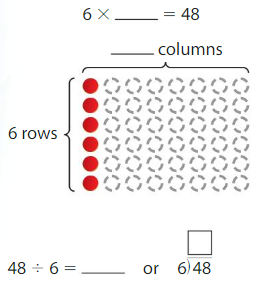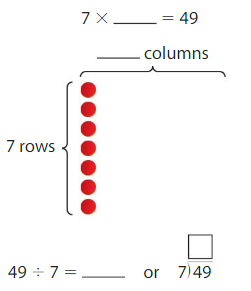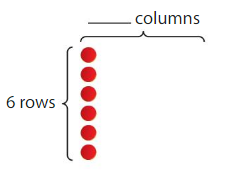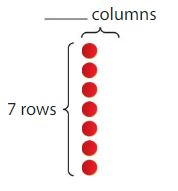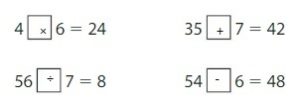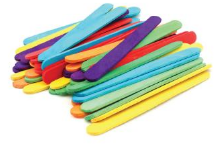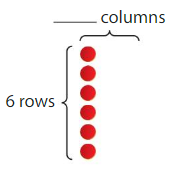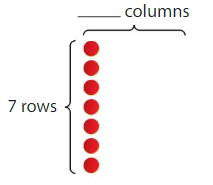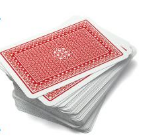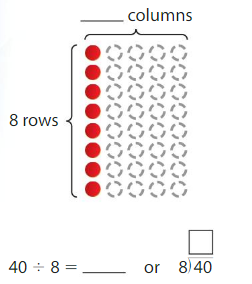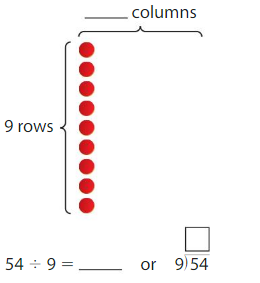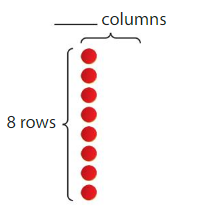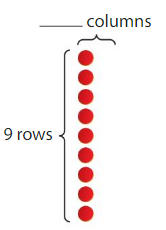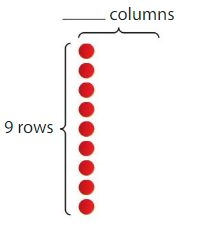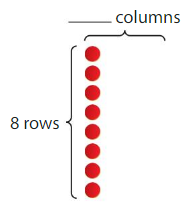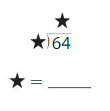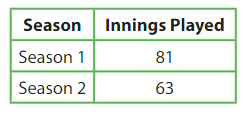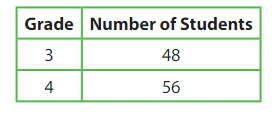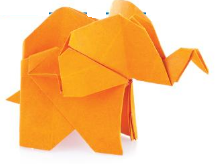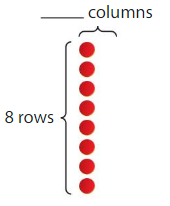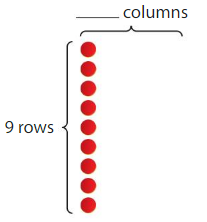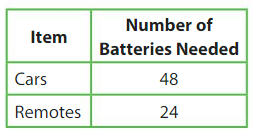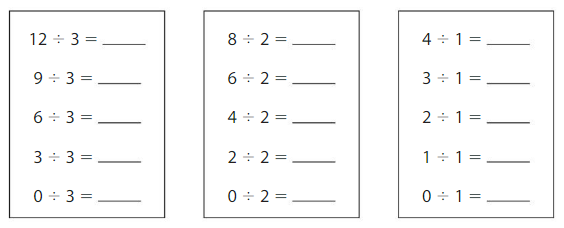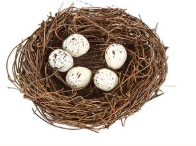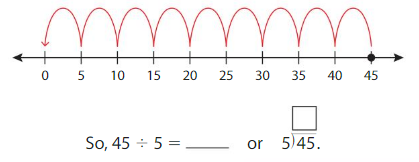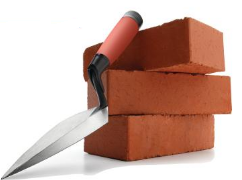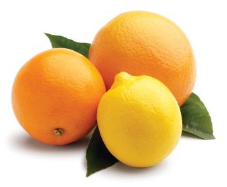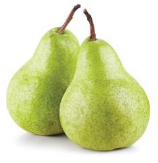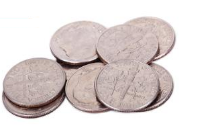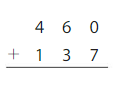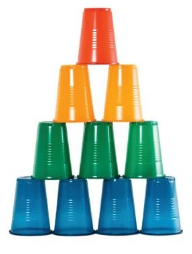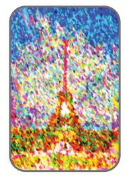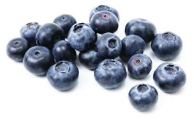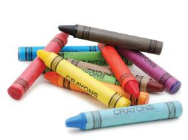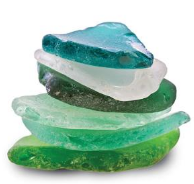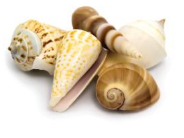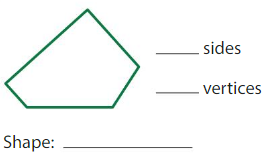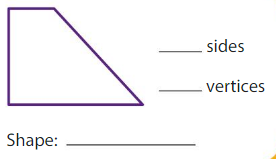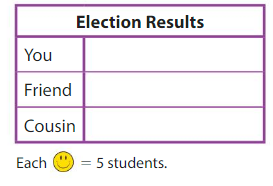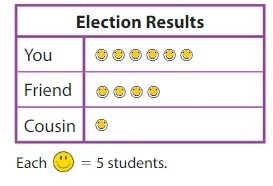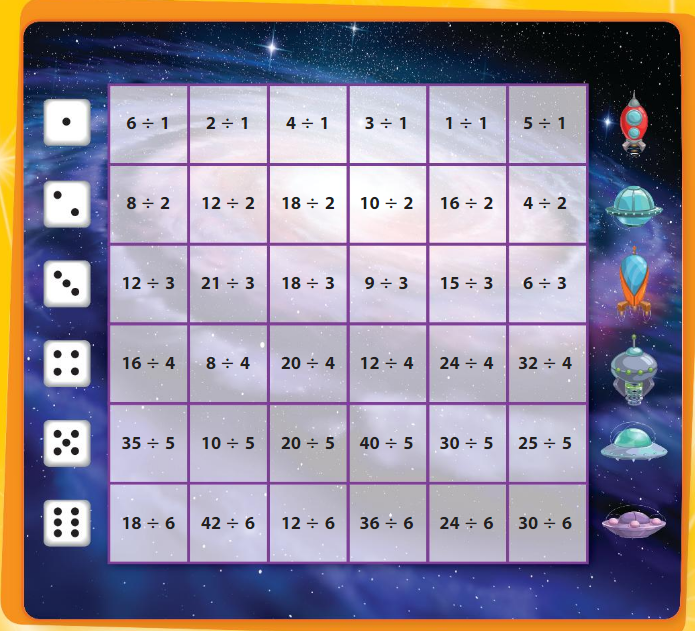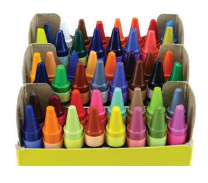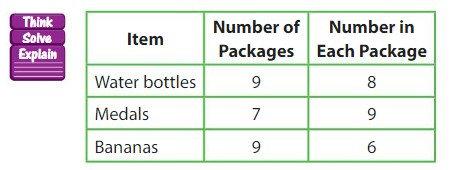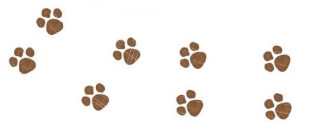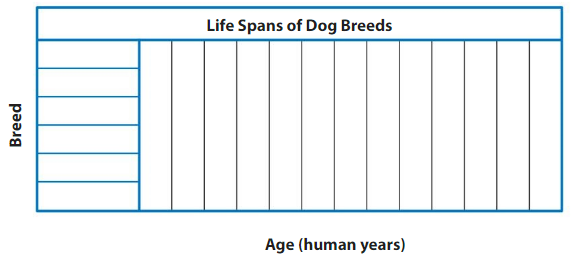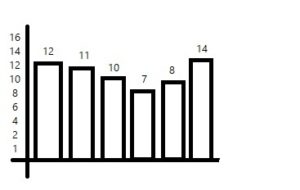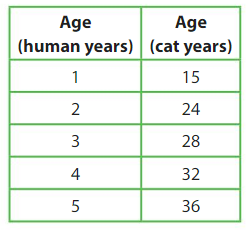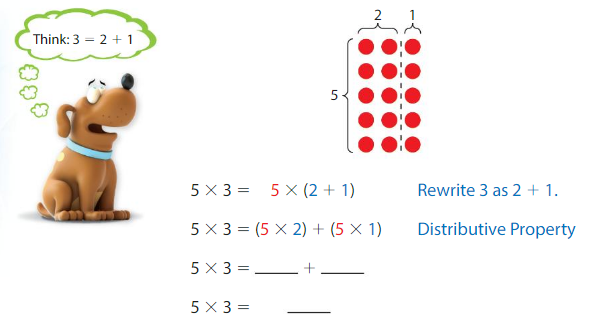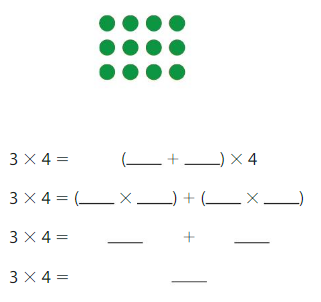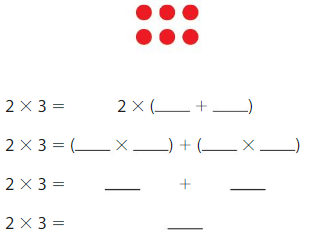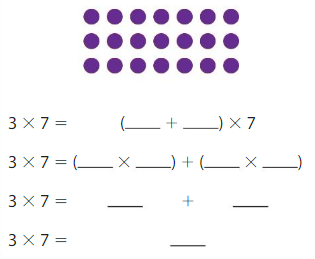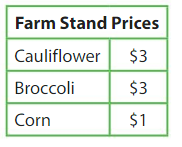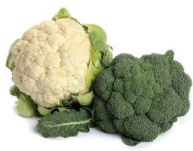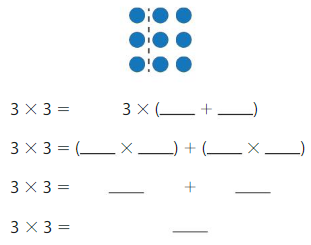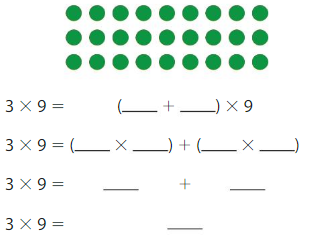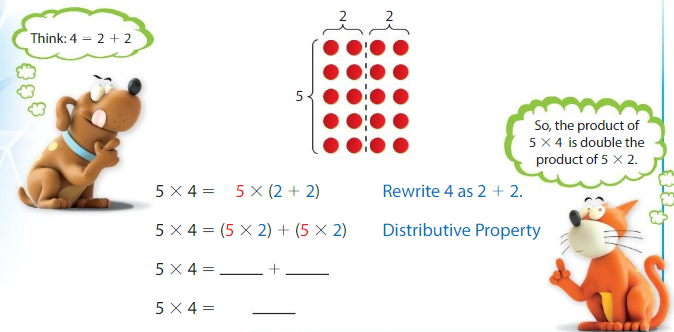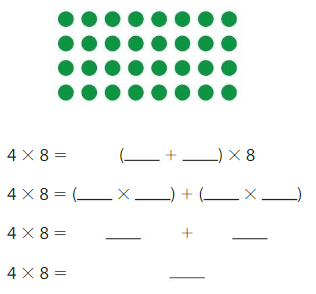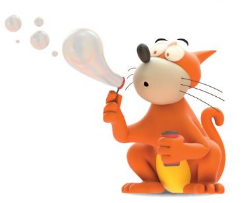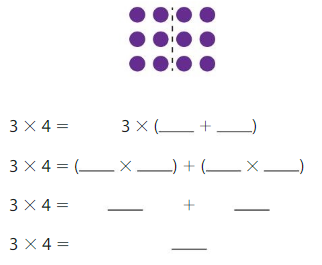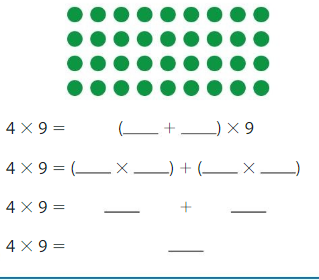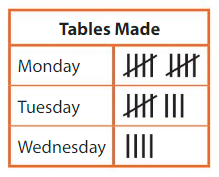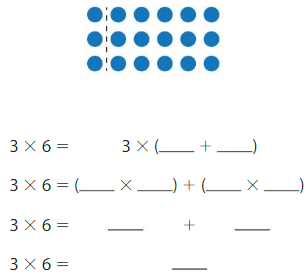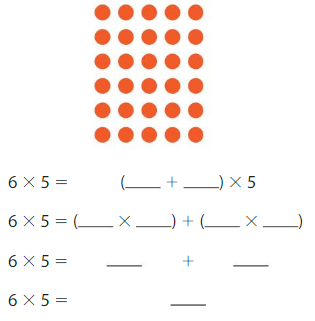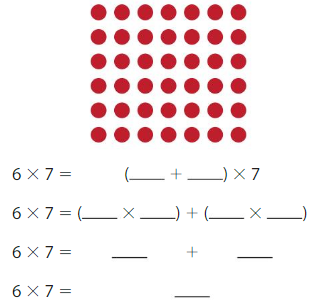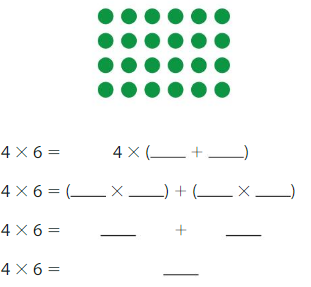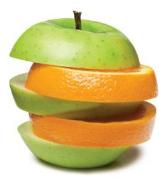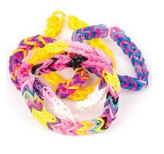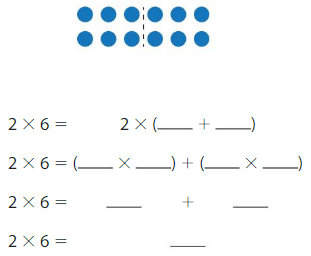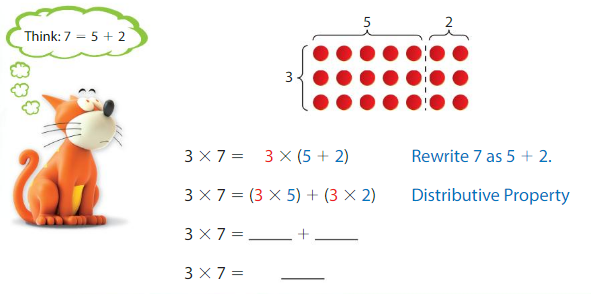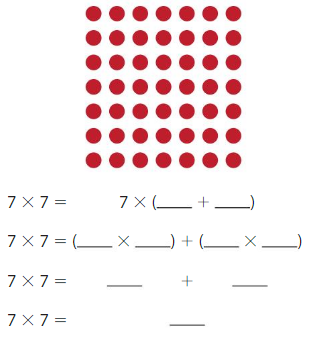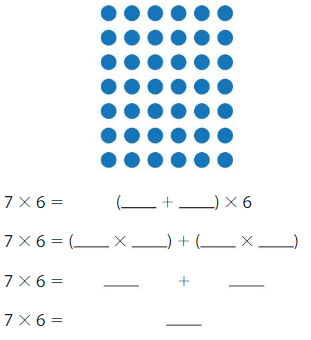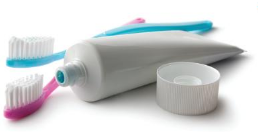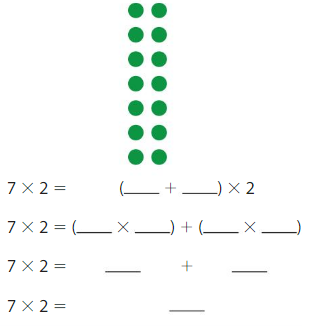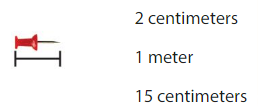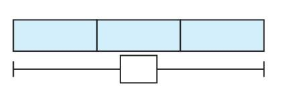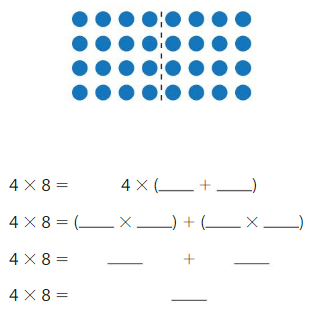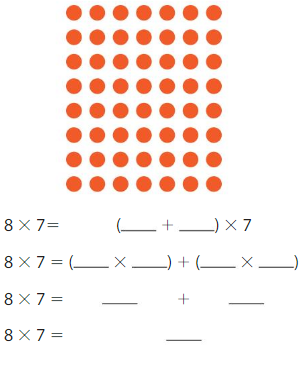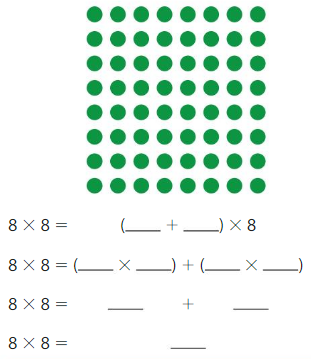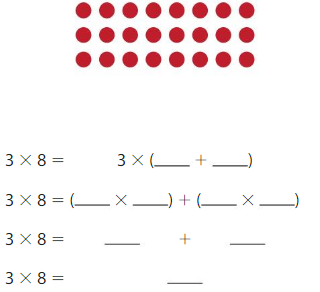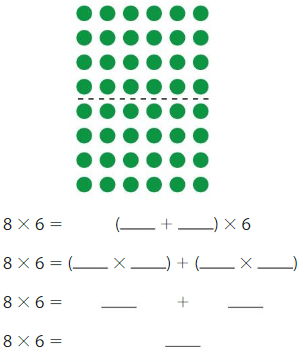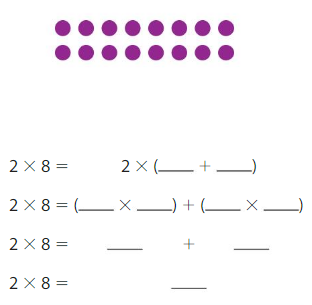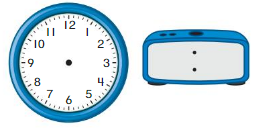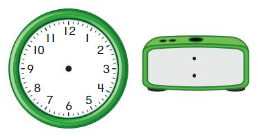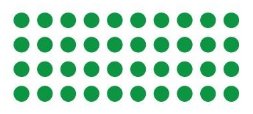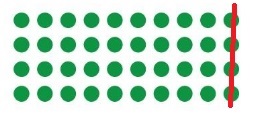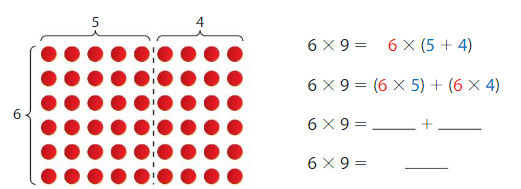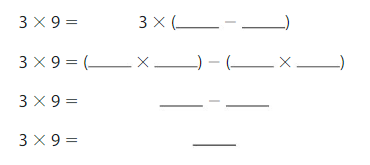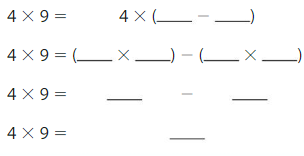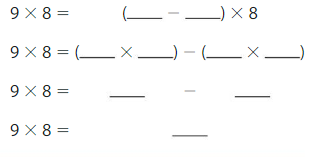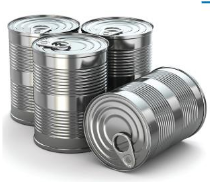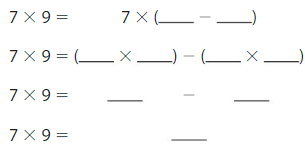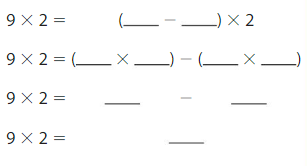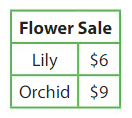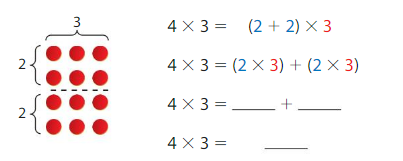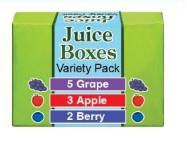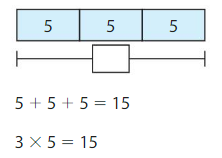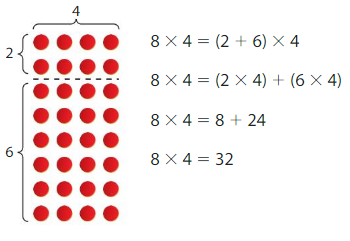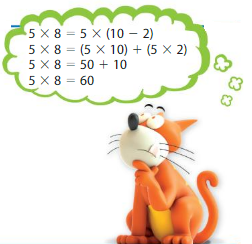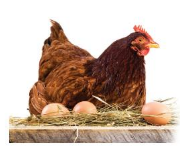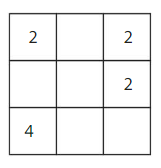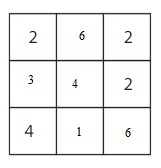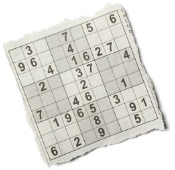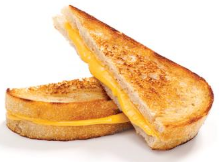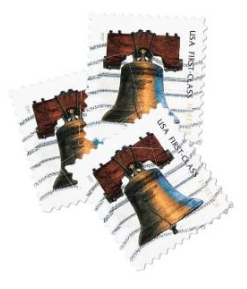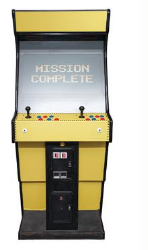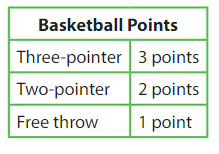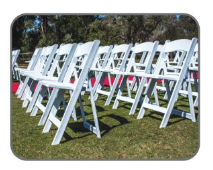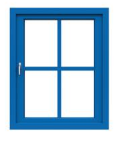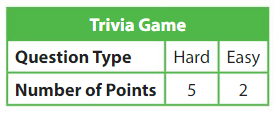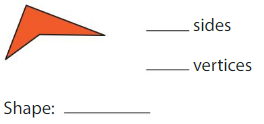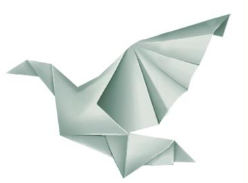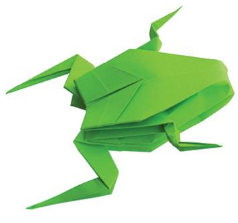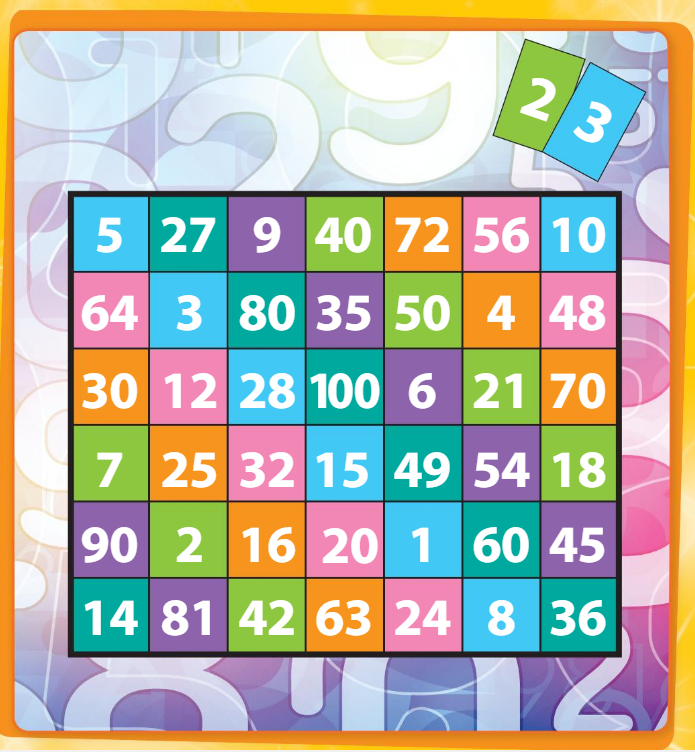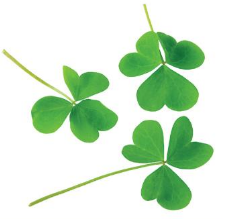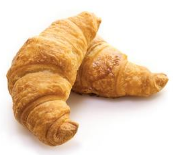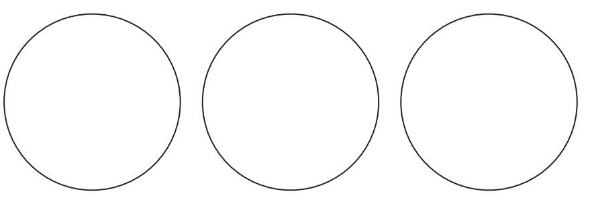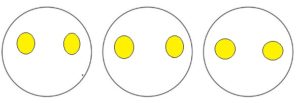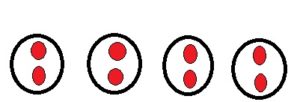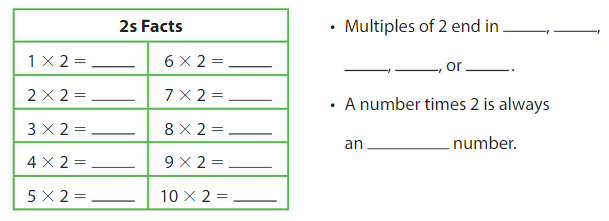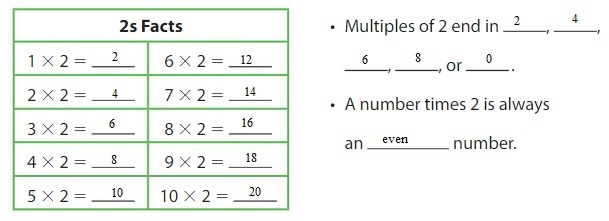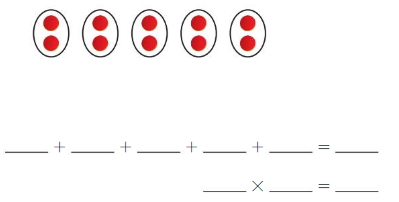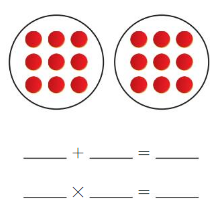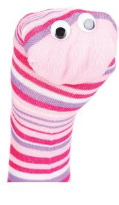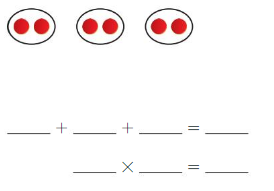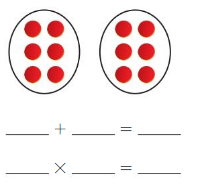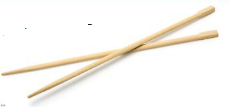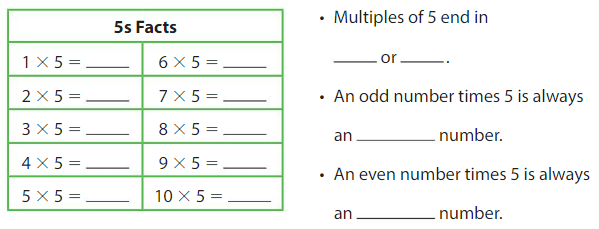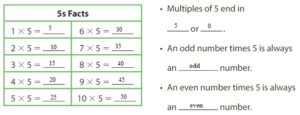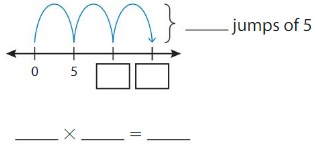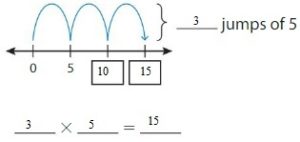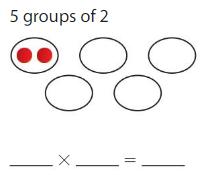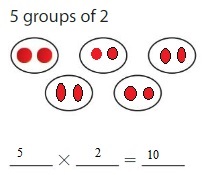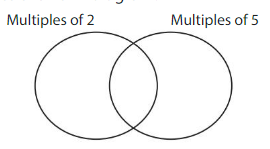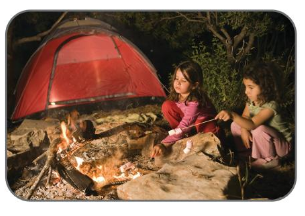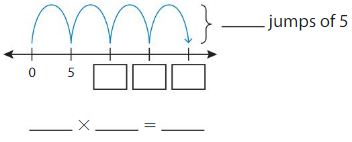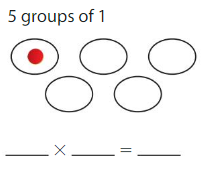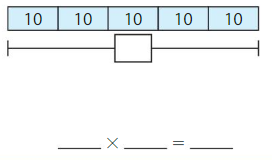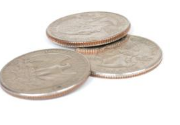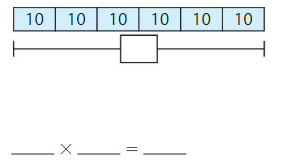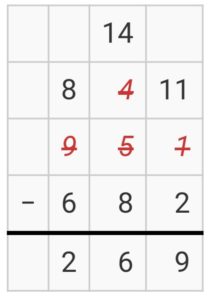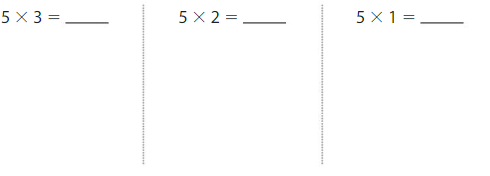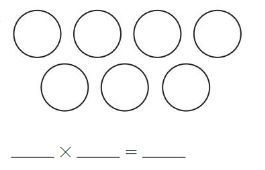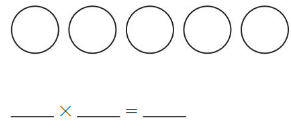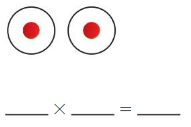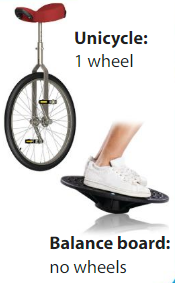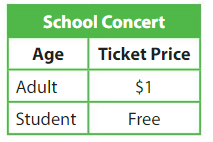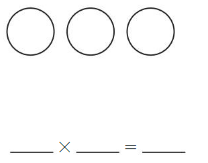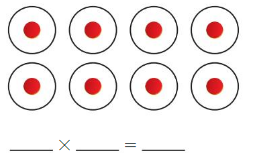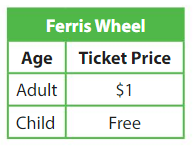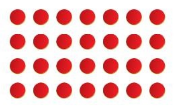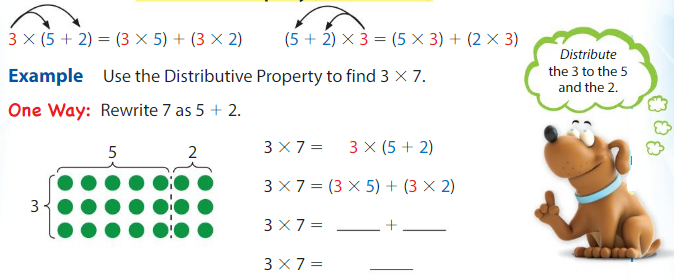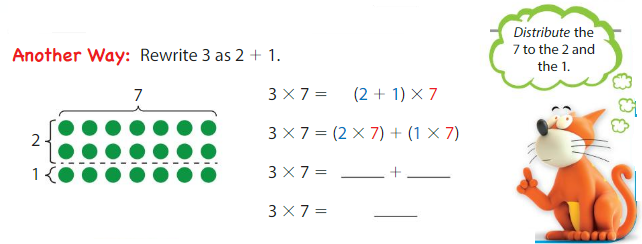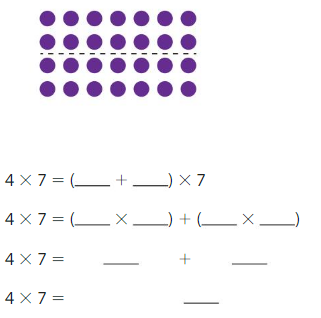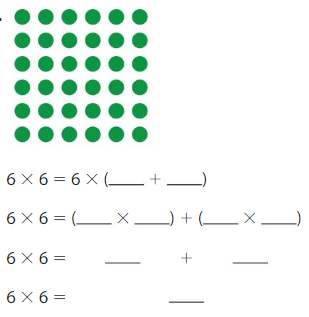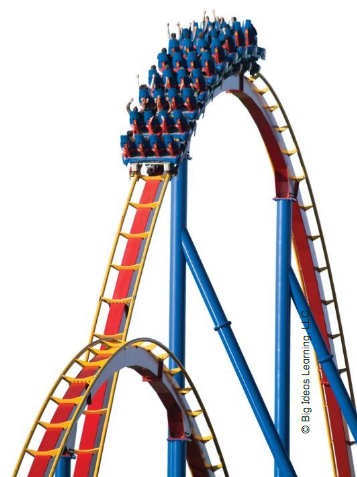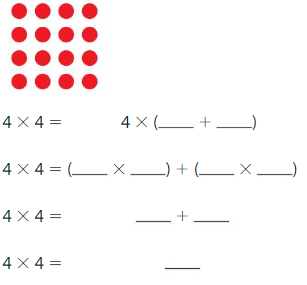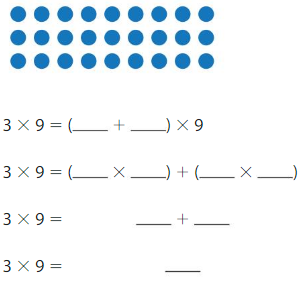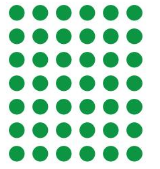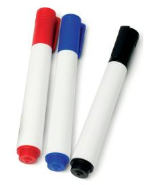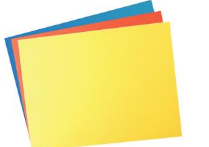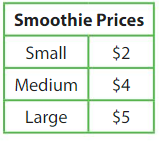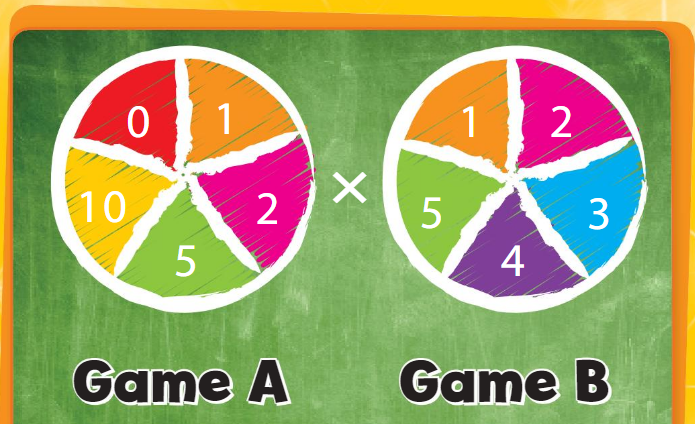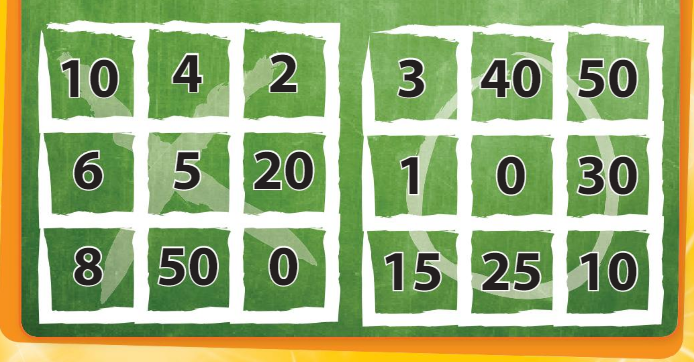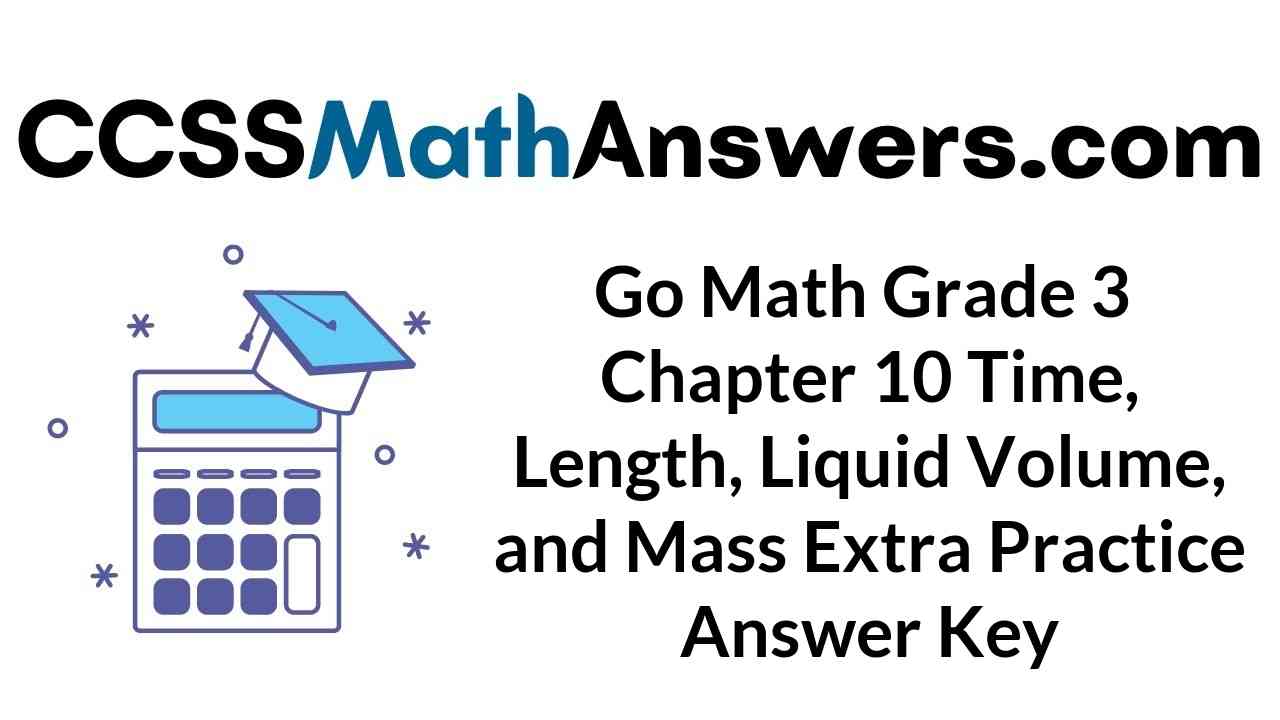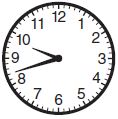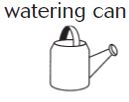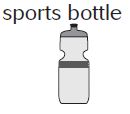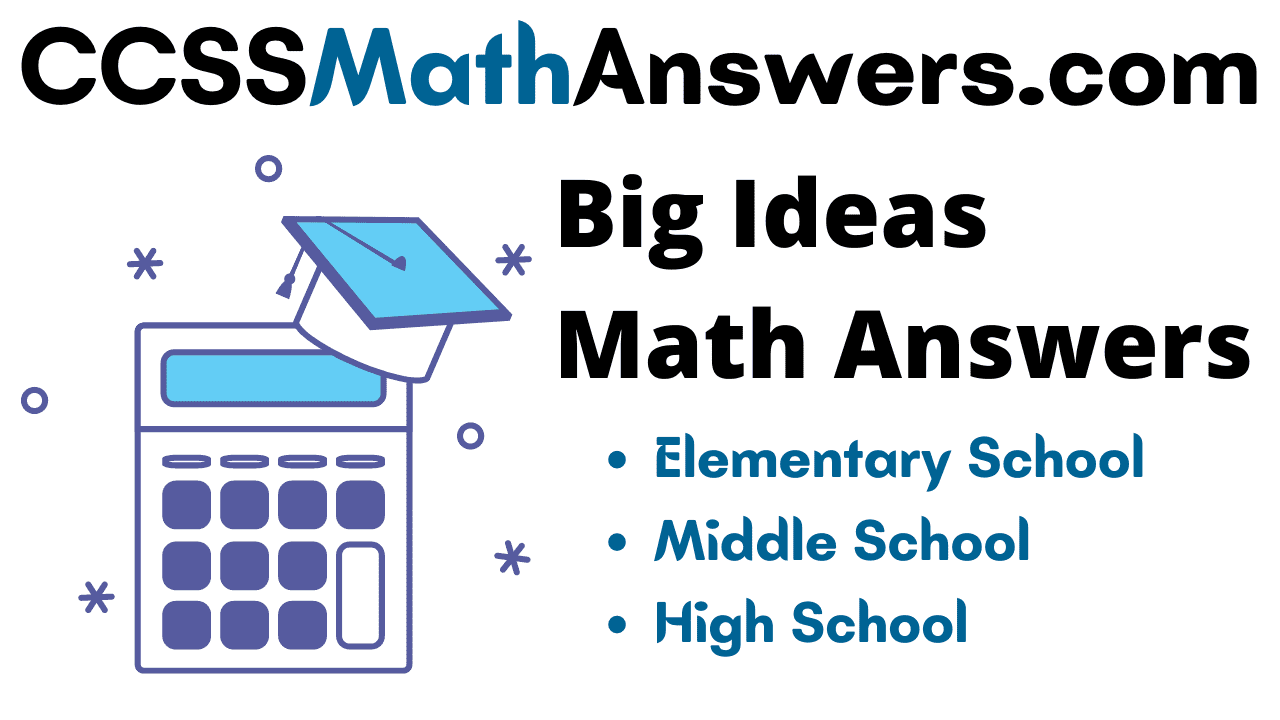Get a brief explanation for all the questions in Big Ideas Math Answers Grade 3 Chapter 9 Multiples and Problem Solving. So, the pupil those who are in search of the solutions of BIM Grade 3 Chapter 9 Multiples and Problem Solving can Download from here. We have provided the solutions as per the latest edition. You can apply the concepts in real-time and improve your performance.
Big Ideas Math Book 3rd Grade Answer Key Chapter 9 Multiples and Problem Solving
Before you start the preparation we suggest the 3rd standard students to have a look at the topics covered in this chapter. Hit the below link and download Big Ideas Math Answers Grade 3 Chapter 9 Multiples and Problem-Solving pdf. With the help of the BIM 3rd Grade Answer Key Chapter 9 Multiples and Problem-Solving students can learn the concepts in depth and also to score maximum marks in the exams.
Lesson – 1: Use Number Lines to Multiply by Multiples of 10
- Lesson 9.1 Use Number Lines to Multiply by Multiples of 10
- Use Number Lines to Multiply by Multiples of 10 Homework & Practice 9.1
Lesson – 2: Use Place Value to Multiply by Multiples of 10
- Lesson 9.2 Use Place Value to Multiply by Multiples of 10
- Use Place Value to Multiply by Multiples of 10 Homework & Practice 9.2
Lesson – 3: Use Properties to Multiply by Multiples of 10
- Lesson 9.3 Use Properties to Multiply by Multiples of 10
- Use Properties to Multiply by Multiples of 10 Homework & Practice 9.3
Lesson – 4: Problem Solving: Multiplication and Division
- Lesson 9.4 Problem Solving: Multiplication and Division
- Problem Solving: Multiplication and Division Homework & Practice 9.4
Lesson – 5: Problem Solving: All Operations
Performance Task
- Multiples and Problem Solving Performance Task
- Multiples and Problem Solving Activity
- Multiples and Problem Solving Chapter Practice
Lesson 9.1 Use Number Lines to Multiply by Multiples of 10
Explore and Grow
Show 5 jumps of 3. Write a multiplication equation shown by the number line.

____ × _____ = _____
Answer: 5 × 3 = 15
Explanation:
The count starts from 0.
You have put 5 jumps of 3 on the number line.
Skip by 3 five times.
That means from 0 to 3, 3 to 6, 6 to 9, 9 to 12, 12 to 15.
5 × 3 = 15
Show 5 jumps of 30. Write a multiplication equation shown by the number line.

____ × ____ = _____
Answer: 5 × 30 = 150
Explanation:
The count starts from 0.
You have put 5 jumps of 30 on the number line.
Skip by 30 five times.
That means from 0 to 30, 30 to 60, 60 to 90, 90 to 120, 120 to 150.
5 × 30 = 150
Structure
Compare the models. How are they the same? How are they different?
Answer: The Multiplication equation for both the models are the same but counts are different.
Think and Grow: Number Lines and Multiples of 10
Example
Find 3 × 50.
3 × 50 means 3 groups of 50.
Number of jumps: ______
Size of each jump: ______
Start at 0. Skip count by 50 three times.
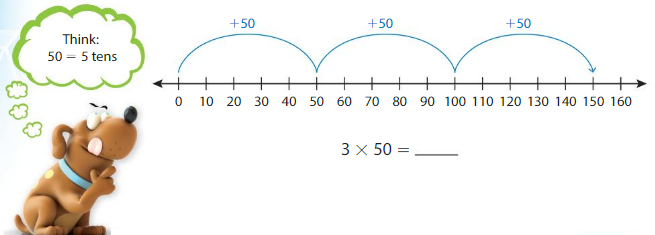
Answer: 3 × 50 = 150
Explanation:
From the figure, we can observe that the count starts from 0.
It means that there are 3 jumps of 50.
The count starts at 0. Skip 50 three times.
Number of jumps = 3
Size of each jump = 50
3 × 50 = 150
Show and Grow
Question 1.
Find 8 × 20.
Number of jumps: ______
Size of each jump: ______

8 × 20 = _____
Answer: 160
Explanation:
From the figure, we can observe that the count starts from 0.
It means that there are 8 jumps of 20.
The count starts at 0. Skip 20 eight times.
Number of jumps = 8
Size of each jump = 20
8 × 20 = 160
Question 2.
Find 4 × 30
Number of jumps: _______
Size of each jump: _______

4 × 30 = _____
Answer: 120
Explanation:
From the figure, we can observe that the count starts from 0.
It means that there are 4 jumps of 30.
The count starts at 0. Skip 30 four times.
Number of jumps = 4
Size of each jump = 30
4 × 30 = 120
Apply and Grow: Practice
Question 3.
Find 2 × 60.
Number of jumps: _______
Size of each jump: _______

2 × 60 = _____
Answer: 120
Explanation:
From the figure, we can observe that the count starts from 0.
It means that there are 2 jumps of 60.
The count starts at 0. Skip 60 two times.
Number of jumps = 2
Size of each jump = 60
2 × 60 = 120
Question 4.
Find 5 × 50

5 × 50 = _____
Answer: 250
Explanation:
From the figure, we can observe that the count starts from 0.
It means that there are 5 jumps of 50.
The count starts at 0. Skip 50 five times.
Number of jumps = 5
Size of each jump = 50
5 × 50 = 250
Question 5.
Find 3 × 70.
3 × 70 = _____
Answer: 210
Explanation:
From the figure, we can observe that the count starts from 0.
It means that there are 3 jumps of 70.
The count starts at 0. Skip 70 three times.
Number of jumps = 3
Size of each jump = 70
3 × 70 = 210
Question 6.
Find 30 × 6.
30 × 6 = _____
Answer: 180
Explanation:
From the figure, we can observe that the count starts from 0.
It means that there are 6 jumps of 30.
The count starts at 0. Skip 30 six times.
Number of jumps = 6
Size of each jump = 30
30 × 6 = 180
Question 7.
Structure
Show 2 × 40 on one number line and 4 × 20 on the other. What is the same about the number lines? What is different?

Answer: The model is the same on the number line. The counts are different and the number of jumps on the number line is different.
Think and Grow: Modeling Real Life
A section of an airplane has 20 rows of seats. Each row has 7 seats. Can the section seat more than 150 people? Explain.

Model:

The section ______ seat more than 150 people.
Explain:
Answer:
Given that,
A section of an airplane has 20 rows of seats. Each row has 7 seats.
20 × 7 = 140 seats
Thus the section cannot seat more than 150 people.
Show and Grow
Question 8.
There are 9 rows of seats in an auditorium. Each row has 30 seats. Can the auditorium seat more than 250 people? Explain.
Answer:
Given that,
There are 9 rows of seats in an auditorium. Each row has 30 seats.
9 × 30 = 270 seats
270 – 250 = 20
Thus the auditorium seat more than 250 people.
Question 9.
A mechanic installs new tires on 20 cars and 20 pickup trucks. How many new tires does the mechanic install in all?
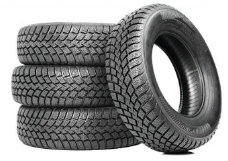
Answer:
Given that,
A mechanic installs new tires on 20 cars and 20 pickup trucks.
20 × 4 = 80 cars
20 × 4 = 80 trucks
80 + 80 = 160 new tires
Thus the mechanic install 160 new tires.
Question 10.
DIG DEEPER!
Newton saves $5 each week for 20 weeks. How much more money does he need to buy a new bike that costs $130? If he continues to save the same amount each week, how many more weeks does he need to save to buy the bike? Explain.
Answer:
Given that,
Newton saves $5 each week for 20 weeks.
5 × 20 = $100
$130 – $100 = $30
Thus Newton need to save $30 to buy the bike.
Use Number Lines to Multiply by Multiples of 10 Homework & Practice 9.1
Question 1.
Find 3 ×30.
Number of jumps: _______
Size of each jump: _______

3 × 30 =
Answer: 90
Explanation:
From the figure, we can observe that the count starts from 0.
It means that there are 3 jumps of 30.
The count starts at 0. Skip 30 three times.
Number of jumps = 3
Size of each jump = 30
3 × 30 = 90
Question 2.
Find 7 × 60.
Number of jumps: _______
Size of each jump: _______

7 × 60 = _____
Answer: 420
Explanation:
From the figure, we can observe that the count starts from 0.
It means that there are 7 jumps of 60.
The count starts at 0. Skip 60 seven times.
Number of jumps = 7
Size of each jump = 60
7 × 60 = 420
Question 3.
Find 4 × 40.
4 × 40 = ____
Answer: 160
Explanation:
We can find the product by using the distributive property.
4 × 40 = 4 × (20 + 20)
4 × 40 = (4 × 20) + (4 × 20)
4 × 40 = 80 + 80
4 × 40 = 160
Question 4.
Find 80 × 3.
80 × 3 = _____
Answer: 240
Explanation:
We can find the product by using the associative property.
80 × 3 = (8 × 10) × 3
80 × 3 = 8 × 3 × 10
80 × 3 = 24 × 10
80 × 3 = 240
Question 5.
Structure
Complete the number line. Then write the multiplication equation shown on the number line.

____ × ____ = _____
Answer: 5 × 30 = 150
By using the number line you can write the multiplication equation.
30 + 30 + 30 + 30 + 30 = 150
Question 6.
Modeling Real Life
A gymnasium has 9 rows of seats. Each row has 50 seats. Can the gymnasium seat more than 500 people? Explain.
Answer:
Given,
A gymnasium has 9 rows of seats. Each row has 50 seats.
9 × 50 = 450 seats
450 – 500 = -50 people
No the gymnasium cannot seat more than 500 people.
Question 7.
Modeling Real Life
Ten adults and 20 children fill their bike tires at a public pump. How many tires are filled in all?

Answer:
Given that,
Ten adults and 20 children fill their bike tires at a public pump.
10 × 2 = 20
20 × 2 = 40
20 + 40 = 60
Thus 60 tires are filled in all.
Review & Refresh
Question 8.
There are 35 counters. The counters are in 7 equal rows. How many counters are in each row?
7 rows of _____
35 ÷ 7 = _____
Answer: 5
Explanation:
There are 35 counters.
The counters are in 7 equal rows.
35/7 = 5
7 rows of 5
35 ÷ 7 = 5
Thus there are 5 counters in each row.
Question 9.
You have 32 counters. You arrange them with 8 counters in each row. How many rows of counters do you make?
_____ rows of 8
32 ÷ 8 = ____
Answer: 4
Explanation:
Given that,
You have 32 counters. You arrange them with 8 counters in each row.
32/8 = 4
Thus you can make 4 rows of 8.
Lesson 9.2 Use Place Value to Multiply by Multiples of 10
Explore and Grow
Use models to find each product. Draw your models.
4 × 6 = _____
4 × 60 = _____
Answer: 24, 240
i. 
Multiply the rows and columns
4 × 6 = 24
ii. Multiply the two numbers 4 and 60
4 × 60 = 240
Structure
Compare the models. How are they the same? How are they different?
Answer: The models for both the problem are the same but the columns are different.
Think and Grow: Place Value and Multiples of 10
Example
Find 4 × 70.
Step 1:
Make a quick sketch to model the product.
Think: 4 groups of 70, or 7 tens.
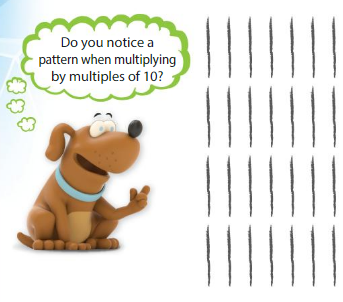
4 × 70 = 4 × ____ tens
4 × 70 = ____ tens
Answer:
4 × 70 = 4 × 7 tens
4 × 70 = 28 tens
Step 2:
Regroup ____ tens
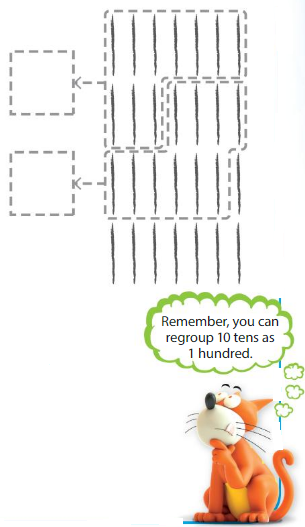
There are _____ hundreds and _____ tens.
So, 4 × 70 = _____.
Answer:
There are 2 hundred and 8 tens.
Now regroup tens.
There are 2 tens
So, group the tens.
2 tens are grouped and the remaining is 8.
4 × 70 = 280
Show and Grow
Make a quick sketch to find the product
Question 1.
3 × 80 = ______
Answer: 240
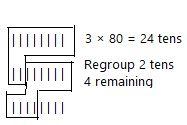
There are 2 hundred and 4 tens.
Question 2.
5 × 40 = _____
Answer: 200
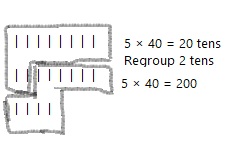
5 × 40 = 20 tens
There are 2 hundred and 0 tens.
Apply and Grow: Practice
Use place value to find the product.
Question 3.
3 × 90 = 3 × ____ tens
3 × 90 = ____ tens
3 × 90 = _____
Answer:
3 × 90 = 3 × 9 tens
3 × 90 = 27 tens
3 × 90 = 270
Question 4.
6 × 60 = 6 × ____ tens
6 × 60 = ____ tens
6 × 60 = _____
Answer:
6 × 60 = 6 × 6 tens
6 × 60 = 36 tens
6 × 60 = 360
Question 5.
2 × 70 = 2 × ____ tens
2 × 70 = ____ tens
2 × 70 = _____
Answer:
2 × 70 = 2 × 7 tens
2 × 70 = 14 tens
2 × 70 = 140
Question 6.
9 × 20 = 9 × ____ tens
9 × 20 = ____ tens
9 × 20 = _____
Answer:
9 × 20 = 9 × 2 tens
9 × 20 = 18 tens
9 × 20 = 180
Find the product
Question 7.
3 × 30 = ____
Answer: 90
Explanation:
3 × 30 = 3 × 3 tens
3 × 30 = 9 tens
3 × 30 = 90
Question 8.
6 × 80 = ____
Answer: 480
Explanation:
6 × 80 = 6 × 8 tens
6 × 80 = 48 tens
6 × 80 = 480
Question 9.
4 × 40 = _____
Answer: 160
Explanation:
4 × 40 = 4 × 4 tens
4 × 40 = 16 tens
4 × 40 = 160
Question 10.
7 × 50 = _____
Answer: 350
Explanation:
7 × 50 = 7 × 5 tens
7 × 50 = 35 tens
7 × 50 = 350
Question 11.
8 × 70 = _____
Answer: 560
Explanation:
8 × 70 = 8 × 7 tens
8 × 70 = 56 tens
8 × 70 = 560
Question 12.
5 × 90 = _____
Answer: 450
Explanation:
5 × 90 = 5 × 9 tens
5 × 90 = 45 tens
5 × 90 = 450
Question 13.
Reasoning
Explain why the product of 6 and 30 has 1 zero and the product of 4 and 50 has 2 zeros.
Answer:
6 × 30 = 180
4 × 50 = 200
4 and 50 has two zeros because it is multiplied by 50 If the number is multiplied by 5 or 10 you will get two zeros.
Question 14.
YOU BE THE TEACHER
Is Descartes correct? Explain.
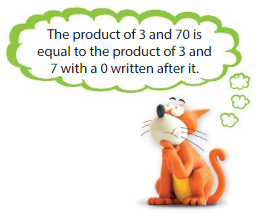
Answer: Yes, Descartes is correct.
3 × 7 = 21
3 × 70 = 210
So the product of 3 and 70 is equal to the product of 3 and 7 with a 0 written after it.
Think and Grow: Modeling Real Life
Newton saves $30 each month for 6 months. Does he have enough money to buy the drone? Explain.
Newton _______ have enough money to buy the drone.$189

Answer:
Given that,
Newton saves $30 each month for 6 months.
6 × $30 = $180
The cost of the drone is $189.
180 – 189 = -9
Therefore Newton does not have enough money to buy the drone.
Show and Grow
Question 15.
Descartes saves $20 each month for 8 months. Does he have enough money to buy the remote control jeep? Explain.
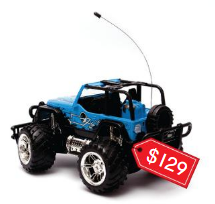
Answer:
Given that,
Descartes saves $20 each month for 8 months.
8 × $20 = $160
The cost of remote control jeep is $129
160 – 129 = $31
Thus Descartes has enough money to buy the remote control jeep.
Question 16.
You practice playing the guitar for 40 minutes every day. How many minutes do you practice in one week?
Answer:
Given that,
You practice playing the guitar for 40 minutes every day.
1 week = 7 days
7 × 40 = 280
Thus you practice 280 minutes in one week.
Question 17.
A box of snacks has 25 bags of pretzels and 25 bags of peanuts. How many bags are in 9 boxes?
Answer:
Given that,
A box of snacks has 25 bags of pretzels and 25 bags of peanuts.
25 + 25 = 50
50 × 9 = 450
Thus there are 450 bags in 9 boxes.
Use Place Value to Multiply by Multiples of 10 Homework & Practice 9.2
Make a quick sketch to find the product.
Question 1.
5 × 70 = _____
Answer: 350

Question 2.
3 × 60 = ____
Answer: 180
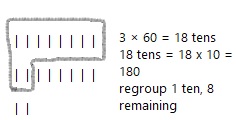
Use place value to find the product
Question 3.
8 × 50 = 8 × ____ tens
8 × 50 = ____ tens
8 × 50 = _____
Answer:
8 × 50 = 8 × 5 tens
8 × 50 = 40 tens
8 × 50 = 400
Question 4.
7 × 60 = 7 × ____ tens
7 × 60 = ____ tens
7 × 60 = _____
Answer:
7 × 60 = 7 × 6 tens
7 × 60 = 42 tens
7 × 60 = 420
Find the product.
Question 5.
6 × 90 = _____
Answer: 540
Explanation:
6 × 90 = 6 × 9 tens
6 × 90 = 54 tens
6 × 90 = 540
Question 6.
8 × 30 = _____
Answer: 240
Explanation:
8 × 30 = 8 × 3 tens
8 × 30 = 24 tens
8 × 30 = 240
Question 7.
5 × 40 = _____
Answer: 200
Explanation:
5 × 40 = 5 × 4 tens
5 × 40 = 20 tens
5 × 40 = 200
Question 8.
Is Newton correct? Explain.
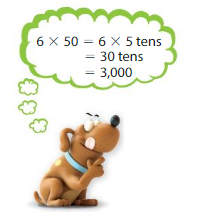
Answer: Newton is incorrect
Explanation:
6 × 50 = 6 × 5 tens
6 × 50 = 30 tens
6 × 50 = 300
By this we can say that Newton is incorrect.
Question 9.
Structure
Write an equation for the quick sketch.
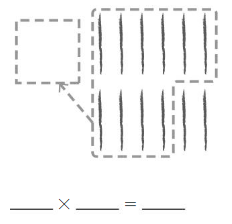
Answer: 2 × 60 = 120
There are 1 group of tens and 2 are remaining.
So, 2 × 60 = 120
Question 10.
Modeling Real Life
Descartes saves $50 each month for 5 months. Does he have enough money to buy the game system? Explain.

Answer:
Given that,
Descartes saves $50 each month for 5 months.
5 × $50 = $250
The cost of the game system is $205.
$250 – $205 = $45
Thus Descartes has enough money to buy the game system.
Question 11.
Modeling Real Life
A group of staff members packs coolers for a field trip. Each cooler has 15 peanut butter sandwiches and 15 turkey sandwiches. How many sandwiches are in 7 coolers?
Answer:
Given that,
A group of staff members packs coolers for a field trip.
Each cooler has 15 peanut butter sandwiches and 15 turkey sandwiches.
15 + 15 = 30
7 × 30 = 210
Thus there are 210 sandwiches in 7 coolers.
Review & Refresh
Question 12.
Round 282 to the nearest ten and to the nearest hundred.
Nearest ten: ____
Nearest hundred: _____
Answer:
First, 282 rounded to the nearest ten is 280.
The number nearest hundred to 282 is 300.
Lesson 9.3 Use Properties to Multiply by Multiples of 10
Explore and Grow
Use the colored rectangles to find 5 × 30.
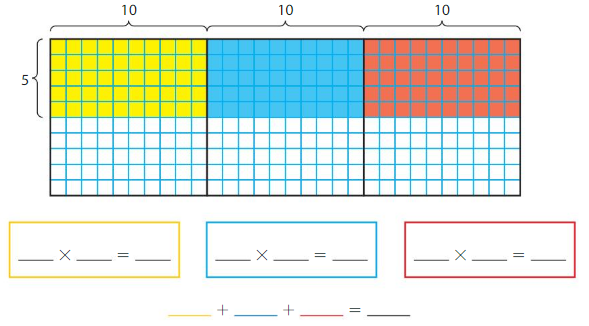
So, 5 × 30 = ______
Answer: 50 + 50 + 50 = 150
Explanation:
The multiplication equation for the yellow-colored rectangle is 5 × 10 = 50
The multiplication equation for the blue-colored rectangle is 5 × 10 = 50
The multiplication equation for the red-colored rectangle is 5 × 10 = 50
50 + 50 + 50 = 150
Reasoning
How does this model relate to the Distributive Property?
Answer:
Yes, you can relate the above equation to the distributive property.
5 × 30 = 5 × (10 + 20)
5 × 30 = (5 × 10) + (5 × 20)
5 × 30 = 50 + 100
5 × 30 = 150
Think and Grow: Properties and Multiples of 10
Example:
Find 6 × 20
One Way:
Use the Associative Property of Multiplication
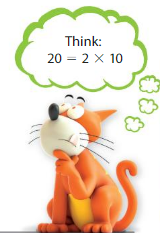
6 × 20 = 6 × (_____ × 10)
6 × 20 = (6 × ____) × 10
6 × 20 = ____ × 10
6 × 20 = ____
Rewrite 20 as _____ × 10
Associative Property of Multiplication
Answer:
Rewrite 20 as 2× 10
6 × 20 = 6 × (2 × 10)
6 × 20 = (6 × 2) × 10
6 × 20 = 12 × 10
6 × 20 = 120
Another Way:
Use the Distributive Property
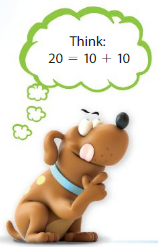
6 × 20 = 6 × (10 × _____)
6 × 20 = (6 × 10) × (6 × ____)
6 × 20 = ____ + _____
6 × 20 = ____
Answer:
Rewrite 20 as 10 + 10
By using the Distributive Property we can find the product.
6 × 20 = 6 × (10 + 10)
6 × 20 = (6 × 10) × (6 × 10)
6 × 20 = 60 + 60
6 × 20 = 120
Show and Grow
Question 1.
Use the Associative Property of Multiplication to find 4 × 60.
4 × 60 = 4 × (_____ × 10)
4 × 60 = (4 × ____) × 10
4 × 60 = ____ × 10
4 × 60 = ____
Answer:
You have to find the product by using the Associative Property of Multiplication.
4 × 60 = 4 × (6 × 10)
4 × 60 = (4 × 6) × 10
4 × 60 = 24 × 10
4 × 60 = 240
Thus the product of 4 × 60 = 240.
Question 2.
Use the Distributive Property to find 9 × 20.
9 × 20 = 9 × (10 × _____)
9 × 20 = (9 × 10) × (9 × ____)
9 × 20 = ____ + _____
9 × 20 = ____
Answer:
You have to find the product by using the Distributive Property of Multiplication.
9 × 20 = 9 × (10 + 10)
9 × 20 = (9 × 10) + (9 × 10)
9 × 20 = 90 + 90
9 × 20 = 180
Apply and Grow: Practice
Use properties to find the product
Question 3.
7 × 30 = _____
Answer: 210
Explanation:
You have to find the product by using the Associative Property of Multiplication.
7 × 30 = 7 × (3 × 10)
7 × 30 = (7 × 3) × 10
7 × 30 = 21 × 10
7 × 30 = 210
Question 4.
5 × 80 = _____
Answer: 400
Explanation:
You have to find the product by using the Associative Property of Multiplication.
5 × 80 = 5 × (8 × 10)
5 × 80 = (5 × 8) × 10
5 × 80 = 40 × 10
5 × 80 = 400
Question 5.
5 × 20 = _____
Answer: 100
Explanation:
You have to find the product by using the Associative Property of Multiplication.
5 × 20 = 5 × (10 × 2)
5 × 20 = (5 × 2) × 10
5 × 20 = 10 × 10
5 × 20 = 100
Question 6.
3 × 90 = _____
Answer: 270
Explanation:
You have to find the product by using the Associative Property of Multiplication.
3 × 90 = 3 × (9 × 10)
3 × 90 = (3 × 9) × 10
3 × 90 = 27 × 10
3 × 90 = 270
Find the missing factor.
Question 7.
8 × ____ = 320
Answer: 40
Explanation:
Let the missing factor be x.
8 × x = 320
x = 320/8
x = 40
Thus the missing factor is 40.
Question 8.
____ × 50 = 300
Answer: 6
Explanation:
Let the missing factor be y.
y × 50 = 300
y = 300/50
y = 6
Thus the missing factor is 6.
Question 9.
_____ × 30 = 270
Answer: 9
Explanation:
Let the missing factor be z.
z × 30 = 270
z = 270/30
z = 9
Thus the missing factor is 9.
Question 10.
Number Sense
Use the Associative Property of Multiplication to show why
4 × 20 = 8 × 10.
Answer:
You have to find the product by using the Associative Property of Multiplication.
4 × 20 = 8 × 10
4 × (2 × 10) = 8 × 10
8 × 10 = 8 × 10
By this we can say that 4 × 20 = 8 × 10.
Question 11.
Open-Ended
Write three expressions equal to 240.

Answer:
The three expressions equal to 240 is
240/3 = 80
2 × 40 | 2 × 40 | 2 × 40
80 + 80 + 80 = 240
Question 12.
Number Sense
Which equations show the Distributive Property?
2 × 20 = (2 × 10) + (2 × 10)
4 × (3 × 10) = (4 × 3) × 10
(7 × 10) + (7 × 10) = 7 × 20
Answer:
2 × 20 = (2 × 10) + (2 × 10) is the distributive property.
4 × (3 × 10) = (4 × 3) × 10 shows the associative property.
Think and Grow: Modeling Real Life
There are 8 tables in the classroom. There are 5 students at each table. Each student has 10 markers. How many markers do the students have in all?

There are ______ markers at each table.
The students have ______ markers in all.
Answer:
Given that,
There are 8 tables in the classroom.
There are 5 students at each table.
8 × 5 = 40
Each student has 10 markers.
40 × 10 = 400
Show and Grow
Question 13.
Your teacher buys 5 boxes of pens. Each box has 6 bundles of 10 pens. How many pens does your teacher buy in all?
Answer:
Given that,
Your teacher buys 5 boxes of pens. Each box has 6 bundles of 10 pens.
6 × 10 = 60
60 × 5 = 300 pens
Thus the teacher buy 300 pens.
Question 14.
DIG DEEPER!
Newton earns $30 each work shift. He wants to buy Descartes a cat tree. The tree costs $150. After how many work shifts can Newton buy the tree?
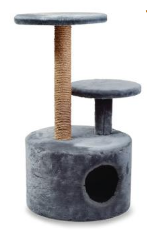
Answer:
Given,
Newton earns $30 each work shift. He wants to buy Descartes a cat tree. The tree costs $150.
To find how many work shifts can Newton buy the tree, you need to divide the cost of the tree by newton’s earned amount.
150/30 = 5
After 5 work shifts, Newton can buy the tree.
Use Properties to Multiply by Multiples of 10 Homework & Practice 9.3
Question 1.
Use the Associative Property of Multiplication to find 6 × 70.
6 × 70 = 6 × (_____ × 10)
6 × 70 = (6 × ____) × 10
6 × 70 = ____ × 10
6 × 70 = ____
Answer:
6 × 70 = 6 × (7 × 10)
6 × 70 = (6 × 7) × 10
6 × 70 = 42 × 10
6 × 70 = 420
Question 2.
Use the Distributive Property to find 3 × 20.
3 × 20 = 3 × (10 × _____)
3 × 20 = (3 × 10) × (3 × ____)
3 × 20 = ____ + _____
3 × 20 = ____
Answer:
3 × 20 = 3 × (10 × 2)
3 × 20 = (3 × 10) × (1 × 2)
3 × 20 = 30 × 2
3 × 20 = 60
Use properties to find the product.
Question 3.
9 × 20 = _____
Answer: 180
Explanation:
We can find the product by using the distributive property.
9 × 20 = 9 × (10 + 10)
9 × 20 = (9 × 10) + (9 × 10)
9 × 20 = 90 + 90
9 × 20 = 180
Question 4.
5 × 30 = ____
Answer: 150
Explanation:
We can find the product by using the associative property.
5 × 30 = (5 × 3) × 10
5 × 30 = 15 × 10
5 × 30 = 150
Find the missing factor
Question 5.
____ × 60 = 180
Answer: 3
Explanation:
Let the missing factor be x.
x × 60 = 180
x = 180/60
x = 3
Thus the missing factor is 3.
Question 6.
6 × ____ = 240
Answer: 40
Explanation:
Let the missing factor be y.
6 × y = 240
y = 240/6
y = 40
Thus the missing factor is 40.
Question 7.
____ × 80 = 720
Answer: 9
Explanation:
Let the missing factor be z.
z × 80 = 720
z = 720/80
z = 9
Thus the missing factor is 9.
Question 8.
YOU BE THE TEACHER
Your friend draws a model to find 4 × 20. Is your friend correct? Explain.
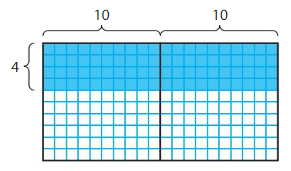
4 × 10 = 40 4 × 10 = 40
40 + 40 = 80
So, 4 × 20 = 80
Answer: Yes your friend is correct.
There are 4 rows and 20 shaded blocks
4 × 20 = 80
Question 9.
Number Sense
How can you tell whether 7 × 40 or 8 × 70 is greater without finding the products?
Answer: We can find a greater number by seeing the numbers.
7 < 8
40 < 70
7 × 40 = 280
8 × 70 = 560
So, 7 × 40 < 8 × 70
Question 10.
Modeling Real Life
There are 9 teams in a math competition. Each team has 6 students. Each student answers 10 questions. How many questions are answered in all?
Answer:
Given that,
There are 9 teams in a math competition. Each team has 6 students.
9 × 6 = 54 students
Each student answers 10 questions.
54 × 10 = 540
Thus the students answered 540 questions in all.
Question 11.
DIG DEEPER!
A soccer team earns $40 each week washing cars. The team wants to buy an inflatable field for $240. After how many weeks can the team buy the field?
Answer:
Given that,
A soccer team earns $40 each week washing cars.
The team wants to buy an inflatable field for $240.
240/40 = 6
It takes 6 weeks to buy the field.
Review & Refresh
Find the quotient
Question 12.

Answer: 6
Explanation:
Divide the two numbers 3 and 18.
18/3 = 6
Thus the quotient is 6.
Question 13.

Answer: 8
Explanation:
Divide the two numbers 4 and 32
32/4 = 8
Thus the quotient is 8.
Question 14.

Answer: 9
Explanation:
Divide the two numbers 27 and 3
27/3 = 9
Thus the quotient is 9.
Question 15.

Answer: 4
Explanation:
Divide the two numbers 4 and 16.
16/4 = 4
Thus the quotient is 4.
Lesson 9.4 Problem Solving: Multiplication and Division
Explore and Grow
Use any strategy to solve the problem.
Descartes uses 72 blocks to build ships. He uses 9 blocks for each ship. Each ship has 2 fabric sails. How many sails does Descartes use?

Descartes uses _____ fabric sails.
Answer:
Given that,
Descartes uses 72 blocks to build ships. He uses 9 blocks for each ship.
72/9 = 8
Each ship has 2 fabric sails.
8 × 2 = 16 sails
Therefore Descartes uses 16 fabric sails.
Structure
What equations did you use to solve? How can you write the equations using a letter to represent the number of fabric sails?
Answer:
I used the division and multiplication equation to solve the problem.
First, you have to divide the number of blocks by the number of blocks for each ship.
72/9 = 8
After that multiply the blocks by the number of fabric sails.
8 × 2 = 16
Think and Grow: Using the Problem-Solving Plan
Example
A box of 8 burritos costs $9. How much does it cost a group of friends to buy 40 burritos?
Understand the Problem
What do you need to find?
• A box has ______ burritos.
• The box costs _____.
• A group of friends wants to buy ______ burritos.
Answer:
• A box has 8 burritos.
• The box costs $9.
• A group of friends wants to buy 40 burritos.
What do you know?
• You need to find how much it _____ costs to buy.
Answer:
You can find the answer by using the above question.
• You need to find how much burritos cost to buy.
Make a Plan
How will you solve?
• Divide _____ by _____ to find how many _____ the group needs to buy.
• Then multiply the quotient by _____ to find the total cost.
Answer:
• Divide 40 by 8 to find how many burritos the group needs to buy.
• Then multiply the quotient by 9 to find the total cost.
Solve
Step 1:
How many boxes does the group need to buy?
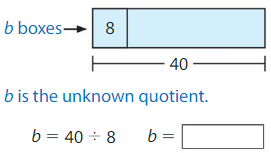
Step 2:
Use to find the total cost.
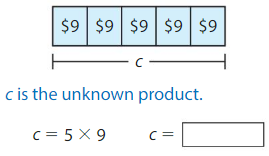
It costs $ _____ for 40 burritos.
Answer:

First divide 40/8 = 5
b = 5

c = 5 × 9 = 45
Thus the total cost is $45.
Show and Grow
Question 1.
You make 9 shots in a basketball game. Each shot is worth 2 points. Your friend has the same number of points. All of her shots are worth 3 points. How many shots does your friend make?
Answer:
Given that,
You make 9 shots in a basketball game. Each shot is worth 2 points.
9 × 2 = 18 points
Your friend has the same number of points. All of her shots are worth 3 points.
18/3 = 6
Thus your friend needs to make 6 shots.
Apply and Grow: Practice
Write equations to solve. Use letters to represent the unknown numbers. Check whether your answer is reasonable.
Question 2.
You read 3 chapters. Each chapter has 8 pages. Your friend reads the same number of pages. All of her chapters have 6 pages. How many chapters does your friend read?
Answer:
Given that,
You read 3 chapters. Each chapter has 8 pages.
3 × 8 pages = 24 pages
Your friend reads the same number of pages. All of her chapters have 6 pages.
24/6 = 4
Thus your friend reads 4 pages.
Question 3.
There are 42 players in a basketball tournament. The players are divided into teams of 7 players. The teams are divided equally among 3 basketball courts. How many teams are at each basketball court?
Answer:
Given that,
There are 42 players in a basketball tournament. The players are divided into teams of 7 players.
42/7 = 6 teams
The teams are divided equally among 3 basketball courts.
6/3 = 3
Thus there are 3 teams at each basketball court.
Question 4.
You have 2 dream catcher kits. Each kit makes 4 dream catchers. You make all of the dream catchers and sell them for $9 each. How much money do you earn?
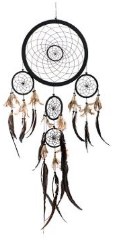
Answer:
Given that,
You have 2 dream catcher kits. Each kit makes 4 dream catchers.
2 × 4 = 8 dream catchers
You make all of the dream catchers and sell them for $9 each.
8 × 9 = $72
Thus you earn $72.
Question 5.
A box of 4 test tubes costs $6. How much does it cost to buy 20 test tubes?

Answer:
Given that,
A box of 4 test tubes costs $6.
20/4 = 5
5 × $6 = $30
Thus it costs $30 to buy 20 test tubes.
Think and Grow: Modeling Real Life
There are 4 crates of milk bottles. Each crate holds 20 bottles. You hand out an equal number of bottles to 10 tables of students. How many bottles of milk does each table of students get?
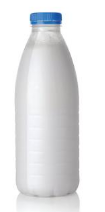
Understand the problem:
Make a plan:
Solve:
Each table of students gets _____ bottles of milk.
Answer:
Given that,
There are 4 crates of milk bottles. Each crate holds 20 bottles.
4 × 20 = 80 bottles
You hand out an equal number of bottles to 10 tables of students.
80/10 = 8
Therefore each table of students gets 8 bottles of milk.
Show and Grow
Question 6.
Six groups of hikers have 2 cases of water to share equally. Each case has 30 bottles of water. How many bottles of water does each group get?
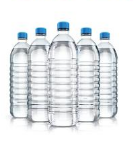
Answer:
Given,
Six groups of hikers have 2 cases of water to share equally. Each case has 30 bottles of water.
2 × 30 = 60 bottles of water
There are 6 groups so divide 60 by 6.
60/6 = 10
Thus each group gets 10 bottles of water.
Question 7.
DIG DEEPER!
Newton and Descartes decide to buy 2 pet toys that cost $20 each. Newton saves $5 each week. Descartes saves $3 each week. If they combine their money, how long does it take them to save enough money to buy the toys?
Answer:
Given that,
Newton and Descartes decide to buy 2 pet toys that cost $20 each.
2 × 20 = $40
Newton saves $5 each week. Descartes saves $3 each week.
5 + 3 = 8
40/8 = 5
Thus it takes 5 weeks to buy the toys.
Problem Solving: Multiplication and Division Homework & Practice 9.4
Write equations to solve. Use letters to represent the unknown numbers. Check whether your answer is reasonable.
Question 1.
Your friend saves $5 each week for 8 weeks. He spends all of the money on 4 toys that each cost the same amount. How much does each toy cost?
Answer:
Given that,
Your friend saves $5 each week for 8 weeks.
He spends all of the money on 4 toys that each cost the same amount.
To find the cost of the toy we need to multiply your friend savings and the number of weeks.
8 × 5 = 40
Thus the cost of the toy is $40.
Question 2.
There are 3 trees. Each tree has 2 birdhouses. Each birdhouse has 4 birds. How many birds are there in all?
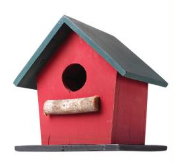
Answer:
Given that,
There are 3 trees. Each tree has 2 birdhouses.
3 × 2 = 6 birdhouses
Each birdhouse has 4 birds.
6 × 4 = 24 birds
Therefore there are 24 birds in all.
Question 3.
There are 54 students at a field day who are divided equally into teams of 6 students. The teams are divided equally among 3 stations. How many teams are at each station?
Answer:
Given that,
There are 54 students at a field day who are divided equally into teams of 6 students.
54/6 = 9 teams
The teams are divided equally among 3 stations.
Again the teams are divided into 3 stations.
9/3 = 3
Thus there are 3 teams at each station.
Question 4.
Newton runs an equal number of miles 2 days each week. He runs 8 miles each week. One mile is equal to 4 laps around the track. Which equation can you use to find how many laps Newton runs each day?
r = 8 ÷ 4
r = 4 ÷ 4
r = 4 × 4
r = 2 × 4
Answer:
Given that,
Newton runs an equal number of miles 2 days each week. He runs 8 miles each week. One mile is equal to 4 laps around the track.
8/2 = 4
To find how many laps Newton runs each day you need to divide 4 by 4
r = 4 ÷ 4
Thus the correct answer is option b.
Question 5.
Modeling Real Life
Ten classrooms have 3 boxes of white boards to share equally. Each box has 30 white boards. How many white boards does each classroom get?

Answer:
Given that,
Ten classrooms have 3 boxes of white boards to share equally.
Each box has 30 white boards.
1 box = 30 whiteboards
3 boxes = 3 × 30 = 90 white boards
Now divide the whiteboards by number of classrooms.
90/10 = 9
Thus each classroom gets 9 whiteboards.
Question 6.
DIP DEEPER!
Newton and Descartes decide to buy 2 amusement park tickets that cost $30 each. Newton saves $2 each week. Descartes saves $4 each week. If they combine their money, how long does it take them to save enough money to buy the tickets?
Answer:
Given that,
Newton and Descartes decide to buy 2 amusement park tickets that cost $30 each.
Newton saves $2 each week. Descartes saves $4 each week.
2 + 4 = 6
Now divide the ticket cost by their savings.
30/6 = 5
Therefore it takes 5 weeks to save enough money to buy the tickets.
Review & Refresh
Round to the nearest ten to estimate the difference
Question 7.
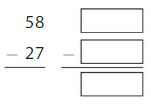
Answer:
58 round to the nearest ten is 60.
27 round to the nearest ten is 30.
60
-30
30
Thus the estimated difference is 30.
Question 8.
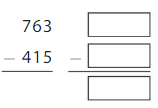
Answer:
763 round to the nearest ten is 760.
415 round to the nearest ten is 420.
760
-420
340
Thus the estimated difference is 340.
Question 9.
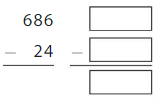
Answer:
686 round to the nearest ten is 690.
24 round to the nearest ten is 20.
690
-20
670
Thus the estimated difference is 670.
Lesson 9.5 Problem Solving: All Operations
Explore and Grow
Use any strategy to solve the problem.
You are making 6 fruit baskets. Each basket has 3 pieces of fruit in it to start. You buy 18 bananas and divide them equally among the baskets. How many pieces of fruit are in each fruit basket now?
There are ______ pieces of fruit in each fruit basket now.
Answer:
Given that,
You are making 6 fruit baskets. Each basket has 3 pieces of fruit in it to start.
6 × 3 = 18
You buy 18 bananas and divide them equally among the baskets.
18/18 = 1
Thus there are 4 pieces of fruit in each fruit basket now.
Structure
How can you solve this problem using one equation?
Answer:
We can solve the above problem by using the multiplication equation.
First, you need to multiply the number of fruit baskets by the number of pieces of fruit.
After that divide the number of pieces by the number of bananas.
Think and Grow: One Equation with Two Operations
Example
Newton buys 3 DVDs for $4 each. He pays with a $20 bill. What is his change?
You can write one equation with two operations to solve this problem.
The equation is shown.
20 – 3 × 4 = c ← c is the amount of change.
When solving a problem with more than one type of operation, use the rules below.
• First, multiply or divide as you read the equation from left to right.
• Then add or subtract as you read the equation from left to right.
Step 1:
Multiply from left to right.
20 – 3 × 4 = c
20 – ____ = c
Step 2: Subtract from left to right.
20 – ____ = c
____ = c
His change is ____.
Answer:
Step 1:
Multiply from left to right.
20 – 3 × 4 = c
20 – 12 = c
Step 2: Subtract from left to right.
20 – 12 = c
8 = c
His change is 8.
Show and Grow
Question 1.
There are 8 tomato plants. You pick 9 tomatoes from each plant. You give away 35 of them. Use the equation 8 × 9 – 35 to find how many tomatoes you have left.
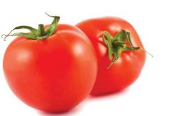
Answer:
Given that,
There are 8 tomato plants. You pick 9 tomatoes from each plant.
8 × 9 = 72
You give away 35 of them.
We can find the number of tomatoes left by using the equation.
8 × 9 – 35
72 – 35 = 37
Thus 37 tomatoes are left.
Question 2.
A family buys 5 tickets for a musical. Each ticket costs $9. They spend $28 at the musical on snacks. Write and solve an equation to find how much they spend in all at the musical. Use to represent the total amount spent.
Answer:
Given that,
A family buys 5 tickets for a musical. Each ticket costs $9.
5 × $9 = $45
They spend $28 at the musical on snacks.
45 – 28 = 17
The equation to find how much they spend in all at the musical is 5 × 9 – 45
Apply and Grow: Practice
Write an equation to solve. Use a letter to represent the unknown number. Check whether your answer is reasonable.
Question 3.
Newton buys 2 movie tickets. Each ticket costs $7. Descartes spends $23 at the movie on snacks. How much money do they spend in all at the movie?
Answer:
Given,
Newton buys 2 movie tickets. Each ticket costs $7.
2 × 7 = $14
Descartes spends $23 at the movie on snacks.
23 + 2 × 7
23 + 14 = $37
Question 4.
Newton has 28 cards. Descartes has 24 cards. Newton divides his cards into 4 equal stacks and gives Descartes one stack. How many cards does Descartes have now?
Answer:
Given,
Newton has 28 cards. Descartes has 24 cards. Newton divides his cards into 4 equal stacks and gives Descartes one stack.
28/4 = 7
Thus there are 7 cards in each stack.
24 + 7 = 31 cards
Therefore Descartes has 31 cards now.
Question 5.
There are 12 apps divided into 3 equal rows on a smart phone. One row of apps is removed. How many apps are left?

Answer:
Given that,
There are 12 apps divided into 3 equal rows on a smart phone.
12/3 = 4
There are 4 apps in each row
One row of apps is removed.
12 – 4 = 8
Thus 8 apps are left.
Question 6.
It costs $240 each week to rent a car. Newton has a coupon that saves him $10 each day he rents the car. How much will it cost him to rent the car for a week with the coupon?

Answer:
Given that,
It costs $240 each week to rent a car. Newton has a coupon that saves him $10 each day he rents the car.
1 week – 7 days
1 day – $10
7 × 10 = $70
240 – 70 = $170
Question 7.
YOU BE THE TEACHER
Your friend says 24 – 6 ÷ 2 = 9. Is your friend correct? Explain.
Answer:
No, because you need to solve the equation from the left.
24 – (6 ÷ 2) = 24 – 12
= 12
Thus your friend is incorrect.
Think and Grow: Modeling Real Life
Newton has $135. He saves $20 each week for 8 weeks. How much money does he have now?
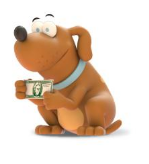
Understand the problem:
Make a plan:
Solve:
Newton now has _____.
Answer:
Given,
Newton has $135. He saves $20 each week for 8 weeks.
20 × 8 = 160
$135 + $160 = $295
Thus Newton now gas $295.
Show and Grow
Question 8.
Your teacher buys 3 packages of napkins for a class party. Each package has 50 napkins. The class uses 79 napkins. How many napkins are left?
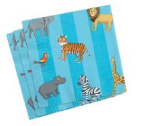
Answer:
Given,
Your teacher buys 3 packages of napkins for a class party. Each package has 50 napkins.
1 pack – 50 napkins
3 packs – 3 × 50 = 150
The class uses 79 napkins.
150 – 79 = 71
Thus 71 napkins are left.
Question 9.
There are 60 seconds in one minute. It takes you 2 minutes and 16 seconds to run from your home to your friend’s home. How many seconds does it take you?
Answer:
Given,
There are 60 seconds in one minute. It takes you 2 minutes and 16 seconds to run from your home to your friend’s home.
1 min – 60 seconds
2 mins – 2 × 60 = 120 seconds
120 + 16 = 136 seconds
Thus it takes 136 seconds to run from your home to your friend’s home.
Question 10.
A store is selling comic books for $5 each. The store sells 33 superhero comic books and 57 science-fiction comic books. How much money does the store earn?
Answer:
Given,
A store is selling comic books for $5 each.
The store sells 33 superhero comic books and 57 science-fiction comic books.
33 + 57 = 90
5 × 90 = $450
Thus the store earn $450.
Problem Solving: All Operations Homework & Practice 9.5
Question 1.
There are 20 math problems divided into 4 equal columns on a worksheet. Your teacher has you cross out one column of problems. Use the equation 20 – 20 ÷ 4 = p to find how many problems are left.
Answer:
Given that,
There are 20 math problems divided into 4 equal columns on a worksheet. Your teacher has you cross out one column of problems.
20 – 20 ÷ 4 = p
20 – 5 = p
15 = p
Thus 15 problems are left.
Question 2.
Newton has 42 blocks. Descartes has 48 blocks. Newton divides his blocks into 6 equal groups and gives Descartes one group. How many blocks does Descartes have now? Use d to represent how many blocks Descartes has now.
Answer:
Given,
Newton has 42 blocks. Descartes has 48 blocks. Newton divides his blocks into 6 equal groups and gives Descartes one group.
42/6 = 7 blocks
48 + 7 = 55 blocks
Thus Descartes has 55 blocks now.
Question 3.
There are 6 palm trees. An islander gathers 8 coconuts from each tree. She gives away 19 of them. How many coconuts does she have now? Write an equation to solve. Use a letter to represent the unknown number. Check whether your answer is reasonable.

Answer:
Given,
There are 6 palm trees. An islander gathers 8 coconuts from each tree. She gives away 19 of them.
6 × 8 – 19 = p
48 – 19 = p
29 = p
Thus the unknown number is 29.
Question 4.
DIG DEEPER!
Find the number that makes 5 × ____ – 15 = 5 true. Explain.
Answer:
5 × ____ – 15 = 5
5 × p – 15 = 5
p – 15 = 5/5
p – 15 = 1
p = 1 + 15
p = 16
Thus the value of the number is 16.
Question 5.
Number Sense
Which equations are true?

Answer:
3 + 5 × 2 = 13
Solve from left to right.
3 + 10 = 13
13 = 13 (true)
20 – 10 × 2 = 20
20 – 20 = 0 (false)
36 ÷ 6 + 3 = 4
36 ÷ 9 = 4
4 = 4 (true)
26 – 8 ÷ 2 = 22
26 – 4 = 22
22 = 22 (true)
Question 6.
Modeling Real Life
A school nurse orders 7 packages of bandages. Each package has 20 bandages. The nurse uses 53 bandages. How many bandages are left?
Answer:
Given,
A school nurse orders 7 packages of bandages. Each package has 20 bandages.
7 × 20 = 140 bandages
The nurse uses 53 bandages.
140 – 53 = 87 bandages
Thus 87 bandages are left.
Question 7.
Modeling Real Life
There are 60 seconds in one minute. You record a video that is 3 minutes and 48 seconds long. How many seconds long is the video?
Answer:
Given,
There are 60 seconds in one minute. You record a video that is 3 minutes and 48 seconds long.
3 mins = 3 × 60 = 180 seconds
180 + 48 = 228 seconds
Thus the video is 228 seconds long.
Review & Refresh
Estimate. Then find the sum. Check whether your answer is reasonable.
Question 8.
Estimate: _____

Answer:
The estimated number for 23 is 20.
The estimated number for 358 is 360.
The estimated number for 172 is 170.
360
170
+20
550
Question 9.
Estimate: _____

Answer:
The estimated number for 202 is 200.
The estimated number for 64 is 60.
The estimated number for 545 is 550.
550
200
+60
810
Question 10.
Estimate: _____

Answer:
The estimated number for 21 is 20
The estimated number for 15 is 20
The estimated number for 837 is 840
840
20
+20
880
Multiples and Problem Solving Performance Task
Question 1.
a. You read 120 minutes from Monday through Thursday this week. How many minutes do you read on Thursday? Complete the picture graph for Thursday.

Answer:
Given,
You read 120 minutes from Monday through Thursday this week.
Each star = 10 minutes
There are 9 stars
9 × 10 = 90 minutes
120 – 90 = 30 minutes
Thus you read 30 minutes on Thursday.
b. Last week you read 30 minutes each day for 5 days. Your goal this week is to read the same number of minutes as last week. How many minutes do you need to read on Friday to reach your goal? Complete the picture graph for Friday.
Answer:
Given,
Last week you read 30 minutes each day for 5 days. Your goal this week is to read the same number of minutes as last week.
30 × 5 = 150 minutes
150 – 120 = 30 minutes
Thus to reach your goal you need to read 30 minutes on Friday.
Question 2.
Write equations to solve. Use letters to represent the unknown numbers. Check whether your answer is reasonable.
a. There are 60 minutes in one hour. Your friend reads 2 hours and 38 minutes during the week. How many minutes does your friend read in all?
Answer:
Given,
There are 60 minutes in one hour. Your friend reads 2 hours and 38 minutes during the week.
1 hour – 60 min
2 hour – 2 × 60 = 120 min
120 + 38 = 158 min
Thus your friend read 158 minutes in all.
b.Your cousin earns 2 stars on her graph each day for 5 days. How many minutes does your cousin read in all?
Answer:
Given,
Your cousin earns 2 stars on her graph each day for 5 days.
2 × 5 = 10 stars
1 star = 10 min
10 stars = 10 × 10 min = 100 min
Thus your cousin read 100 min in all.
Question 3.
Use the information above. Order the numbers of minutes you, your friend, and your cousin read from least to greatest. The person with the least number of minutes wants to read the same amount as the person with the greatest number of minutes. How many more minutes does the person need to read?

Answer:
Given that,
you read 150 minutes in all.
your friend read 158 minutes in all
your cousin read 100 min in all.
The order from least to greatest is 100, 150, 158.
Multiples and Problem Solving Activity
Multiplication Flip and Find
Directions:
1. Place the Multiplication Flip and Find Cards face down in the boxes.
2. Players take turns flipping two cards.
3. If your cards show a matching expression and product, then keep the cards. If your cards do not show a matching expression and product, then flip the cards back over.
4. Play until all matches are made.
5. The player with the most matches wins!

Answer:
Total number of cards = 12
There are 2 matching flip cards in boxes
To find the most matches we have to divide the total number of flip cards by matching cards.
12/2 = 6
Thus the player with the most matches wins is 6.
Multiples and Problem Solving Chapter Practice
9.1 Use Number Lines to Multiply by Multiples of 10
Question 1.
Find 8 × 20
Number of jumps: ______
Size of each jumps: _____

8 × 20 = _____
Answer: 160
Number of jumps: 8
Size of each jump: 20
8 jumps of 20 = 160
Question 2.
Find 7 × 40

7 × 40 = ____
Answer: 280
Explanation:
Number of jumps: 7
Size of each jump: 40
7 jumps of 40 = 7 × 40 = 280
Question 3.
Find 30 × 9
30 × 9 = ____
Answer: 270
Explanation:
Number of jumps: 9
Size of each jump: 30
30 × 9 = 270
Question 4.
Structure
Complete the number line. Then write the multiplication equation for the number line.

____ × ____ = ____
Answer: 3 × 40 = 120
Explanation:
By seeing the above number line we can say that there are
3 jumps of 40
That means 3 × 40
40 + 40 + 40 = 120
Thus the multiplication equation is 3 × 40 = 120
9.2 Use Place Value to Multiply by Multiples of 10
Make a quick sketch to find the product
Question 5.
6 × 40 = _____
Answer: 240
Number of jumps: 6
Size of each jump: 40
We can find the product by using the number line.
6 jumps of 40.
6 × 40 = 240
Question 6.
5 × 20 = ____
Answer: 100
Number of jumps: 5
Size of each jump: 20
We can find the product by using the number line.
5 jumps of 20.
5 × 20 = 100
Use place value to find the product
Question 7.
4 × 50 = 4 × ____ tens
4 × 50 = ____ tens
4 × 50 = ____
Answer:
4 × 50 = 4 × 5 tens
4 × 50 = 20 tens
4 × 50 = 20 × 10
4 × 50 = 200
Question 8.
3 × 60 = 3 × ____ tens
3 × 60 = ____ tens
3 × 60 = ____
Answer:
3 × 60 = 3 × 6 tens
3 × 60 = 18 tens
3 × 60 = 18 × 10
3 × 60 = 180
Question 9.
7 × 70 = 7 × ____ tens
7 × 70 = ____ tens
7 × 70 = ____
Answer:
7 × 70 = 7 × 7 tens
7 × 70 = 49 tens
7 × 70 = 49 × 10
7 × 70 = 490
Question 10.
9 × 80 = 9 × ____ tens
9 × 80 = ____ tens
9 × 80 = ____
Answer:
9 × 80 = 9 × 8 tens
9 × 80 = 72 tens
9 × 80 = 72 × 10
9 × 80 = 720
Find the product
Question 11.
2 × 60 = _____
Answer: 120
Explanation:
We can write 60 as 6 tens.
2 × 60 = 2 × 6 tens
2 × 60 = 12 tens
2 × 60 = 12 × 10
2 × 60 = 120
Question 12.
8 × 40 = ____
Answer: 320
Explanation:
We can write 40 as 4 tens.
8 × 40 = 8 × 4 tens
8 × 40 = 32 tens
8 × 40 = 32 × 10
8 × 40 = 320
Question 13.
5 × 90 = _____
Answer: 450
Explanation:
We can write 90 as 9 tens.
5 × 90 = 5 × 9 tens
5 × 90 = 45 tens
5 × 90 = 45 × 10
5 × 90 = 450
Question 14.
Modeling Real Life
You practice ballet for 30 minutes every day. How many minutes do you practice in one week?

Answer: 210 minutes
Explanation:
Given that,
You practice ballet for 30 minutes every day.
Convert from week to days.
1 week – 7 days
7 × 30 min = 210 minutes
Thus you practice 210 minutes in one week.
9.3 Use Properties to Multiply by Multiples of 10
Question 15.
Use the Associative Property of Multiplication to find 4 × 90.
4 × 90 = 4 × (____ × 10)
4 × 90 = (4 × ____) × 10
4 × 90 = ____ × 10
4 × 90 = ____
Answer:
We can find the product by using the Associative property.
4 × 90 = 4 × (9 × 10)
4 × 90 = (4 × 9) × 10
4 × 90 = 36 × 10
4 × 90 = 360
Question 16.
Use the Distributive Property to find 8 × 20.
8 × 20 = 8 × (10 + ____)
8 × 20 = (8 × 10) + (8 × ____)
8 × 20 = ___ + ____
8 × 20 = ____
Answer:
We can find the product by using the distributive property.
8 × 20 = 8 × (10 + 10)
8 × 20 = (8 × 10) + (8 × 10)
8 × 20 = 80 + 80
8 × 20 = 160
Use properties to find the product
Question 17.
7 × 20 = ____
Answer: 140
Explanation:
We can find the product by using the distributive property.
7 × 20 = 7 × (10 + 10)
7 × 20 = (7 × 10) + (7 × 10)
7 × 20 = 70 + 70
7 × 20 = 140
Question 18.
5 × 70 = ____
Answer: 350
Explanation:
We can find the product by using the Associative property.
5 × 70 = 5 × (7 × 10)
5 × 70 = (5 × 7) × 10
5 × 70 = 35 × 10
5 × 70 = 350
Find the missing factor
Question 19.
____ × 20 = 180
Answer: 9
Explanation:
Let the missing factor be x.
x × 20 = 180
x = 180/20
x = 9
Thus the missing factor is 9
Question 20.
7 × ___ = 350
Answer: 50
Explanation:
Let the missing factor be y.
7 × y = 350
y = 350/7
y = 50
Thus the missing factor is 50.
Question 21.
____ × 80 = 240
Answer: 3
Explanation:
Let the missing factor be z.
z × 80 = 240
z = 240/80
z = 3
Thus the missing factor is 3.
Question 22.
Open-Ended
Write three expressions equal to 120.
_____ × ______
_____ × ______
_____ × _______
Answer:
The three expressions equal to 120 are given below,
1 × 120 = 120
2 × 60 = 120
3 × 40 = 120
9.4 Problem Solving: Multiplication and Division
Write equations to solve. Use letters to represent the unknown numbers. Check whether your answer is reasonable.
Question 23.
There are 2 bookcases. Each bookcase has 3 shelves of 5 books. How many books are there in all?
Answer: 30
Explanation:
Given,
There are 2 bookcases.
Each bookcase has 3 shelves of 5 books.
3 × 5 = 15 books in one bookcase
15 × 2 = 30 books
Thus there are 30 books in 2 bookcases.
Question 24.
Four veterinarians share 2 boxes of ear wipes. Each box has 20 packs of ear wipes. How many packs of ear wipes does each veterinarian get?
Answer:
Given,
Four veterinarians share 2 boxes of ear wipes.
Each box has 20 packs of ear wipes.
2 × 20 = 40 packs
There are 4 veterinarians.
40/4 = 10
Thus each veterinarian gets 10 packs of ear wipes.
9.5 Problem Solving: All Operation
Write an equation to solve. Use a letter to represent the unknown number. Check whether your answer is reasonable.
Question 25.
Newton has 30 beads. Descartes has 22 beads. Newton divides his beads into 3 equal groups and gives Descartes one group. How many beads does Descartes have now?
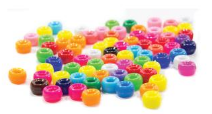
Answer: 32 beads
Explanation:
Given that,
Newton has 30 beads. Descartes has 22 beads.
Newton divides his beads into 3 equal groups and gives Descartes one group.
30/3 = 10 beads
Thus there are 10 beads in each group.
22 + 10 = 32
Therefore Descartes has 32 beads now.
Question 26.
It costs $166 to rent a bounce house for 7 hours. Descartes has a coupon that saves him $5 each hour he rents the bounce house. How much will it cost him to rent the bounce house for 7 hours with the coupon?

Answer:
Given,
It costs $166 to rent a bounce house for 7 hours.
Descartes has a coupon that saves him $5 each hour he rents the bounce house.
7 × $5 = $35
$166 – $35 = $131 for 7 hours with the coupon.
Thus it will cost $131 to rent the bounce house for 7 hours with the coupon.
Final Words:
We wish the details provided in the Bigideas Math Answers Grade 3 Chapter 9 Multiples and Problem Solving is beneficial for you. We have provided the solutions in the pdf format so that you can practice the problems in offline mode also. For any queries, you can post the comments in the comment box. Keep in touch with us to get the answers for all the Big Ideas Math Grade 3 chapters.
